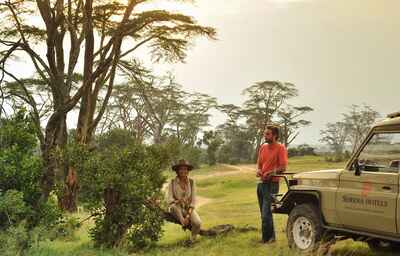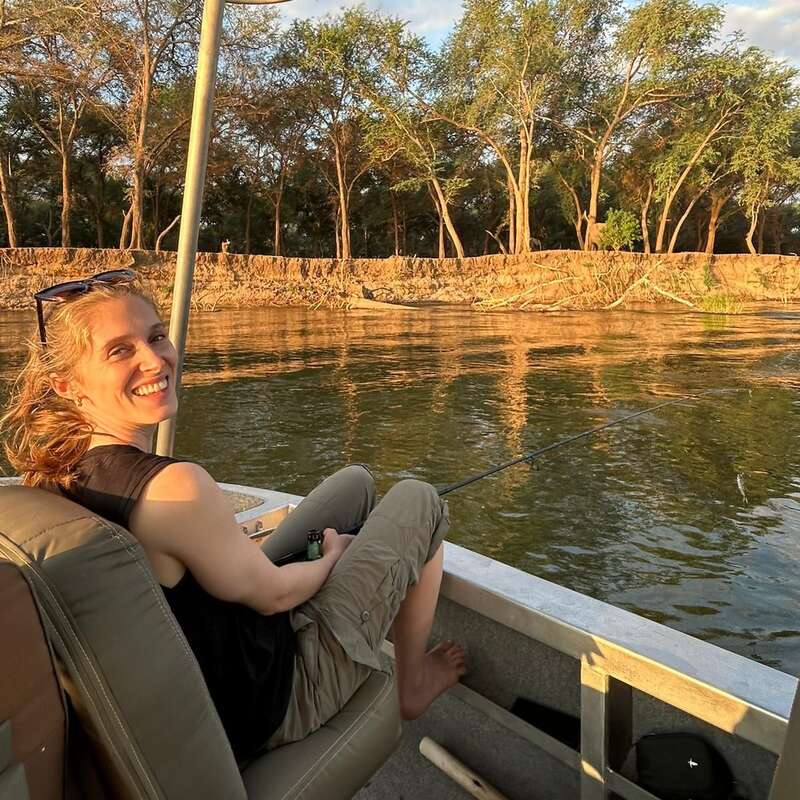About Sweetwaters Serena Camp
The oldest lodgings in the Ol Pejeta Conservancy, Sweetwaters Serena Camp is a large tented camp in the eastern ...
... sector of the conservancy, catering predominantly to a mid-range, drive-in group safari market. Part of the international Serena Hotels group whose largest shareholder is the Aga Khan Fund for Economic Development, the camp has full hotel facilities.
This is a reasonably comfortable and secure option for a stay at Ol Pejeta, and we think it's particularly suitable for young families and some first-time visitors new to the safari experience. With its consistent standards and pleasant, landscaped environment it doesn't feel too different from a country retreat hotel. The waterhole attracts plenty of wildlife and Mount Kenya is often visible – as are the lights of Nanyuki town, just a few kilometres away.
Our view
This is a reasonably comfortable and secure option for a stay at Ol Pejeta, and we think it's particularly suitable for young families and some first-time visitors new to the safari experience. With its consistent standards and pleasant, landscaped environment it doesn't feel too different from a country retreat hotel. The waterhole attracts plenty of wildlife and Mount Kenya is often visible – as are the lights of Nanyuki town, just a few kilometres away.
Accommodation
56 tents
Children
Best for 7+
Open
All year
Activities

4WD Safari

Birdwatching

Guided walking safari

Night drive

Private activities
Traveller reviews of Sweetwaters Serena Camp
2 real, un-edited reviews from Expert Africa's travellers.
Arrived 3 Nov 2024, 2 nights
"Sweetwaters Serena Camp review"
Overall rating: Excellent
Arrived 23 Aug 2015, 3 nights
"Sensational Sweetwaters Serena"
Overall rating: Excellent
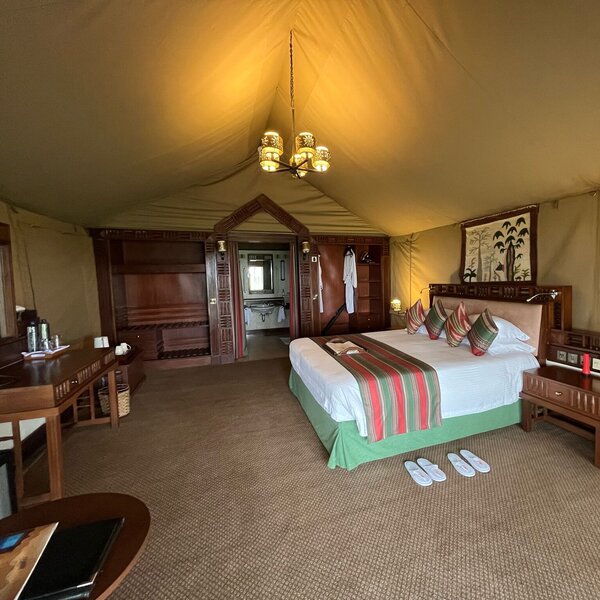
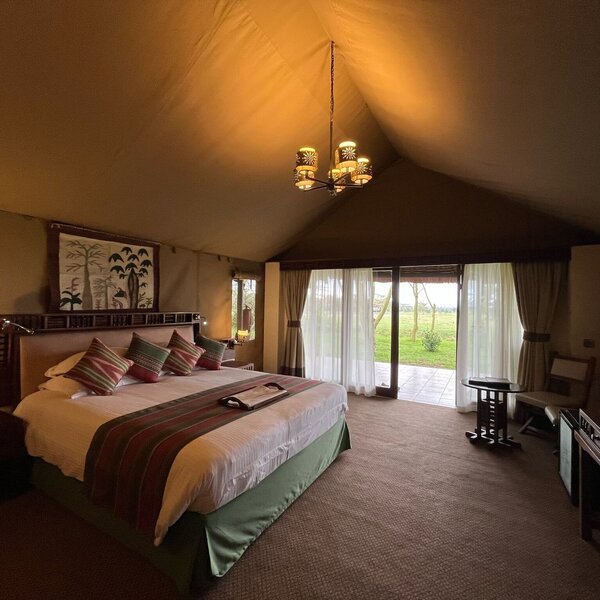
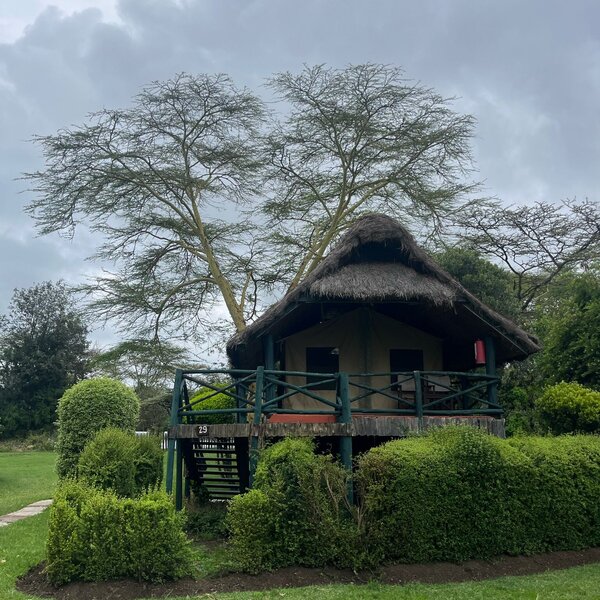
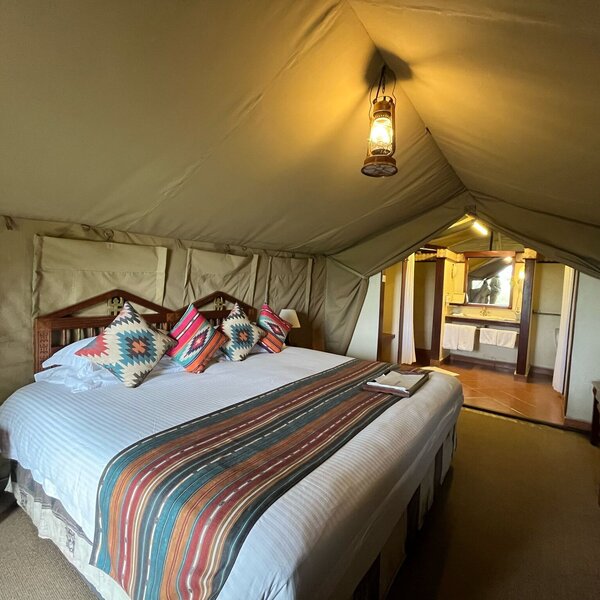
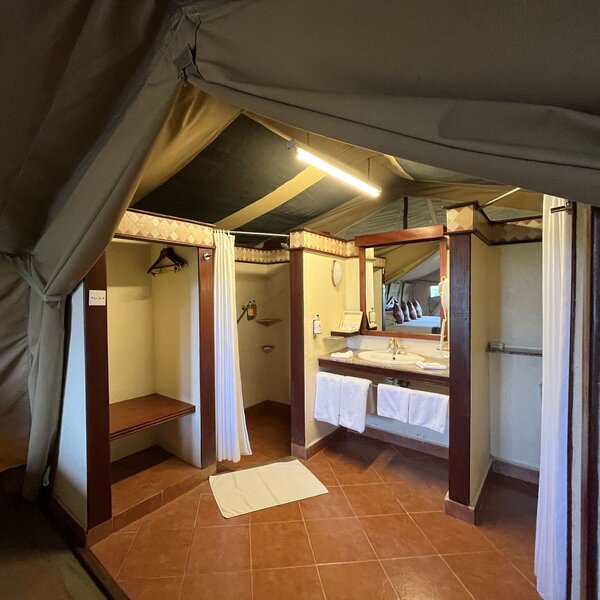
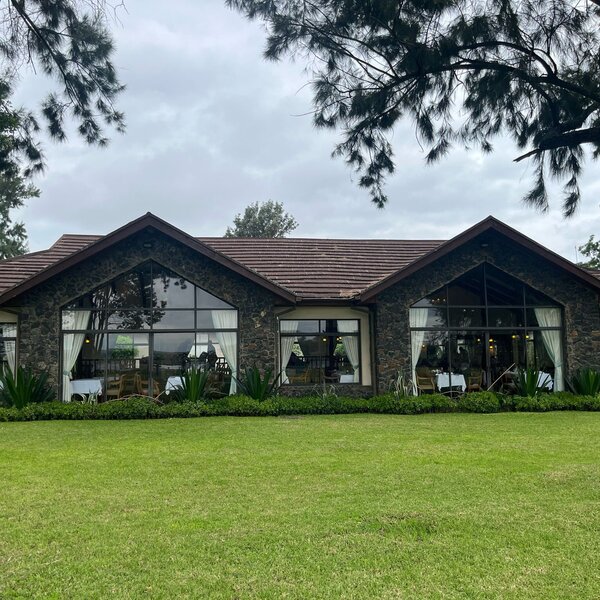
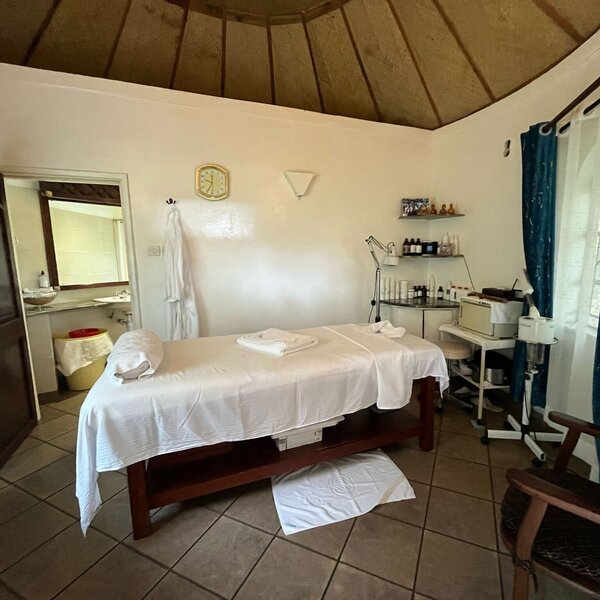
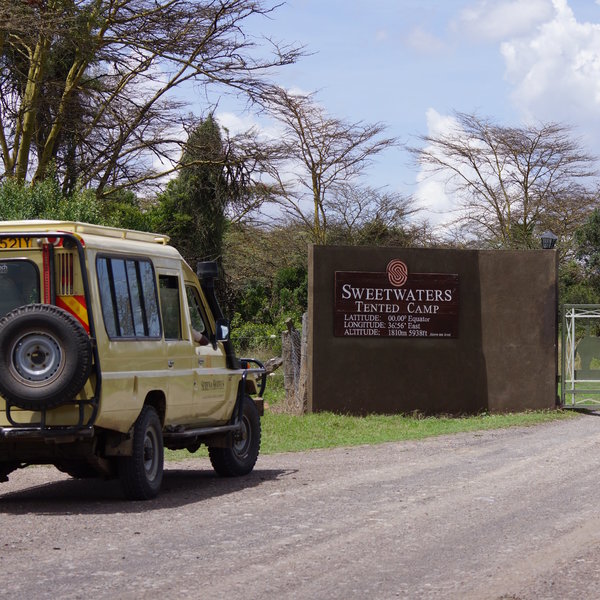
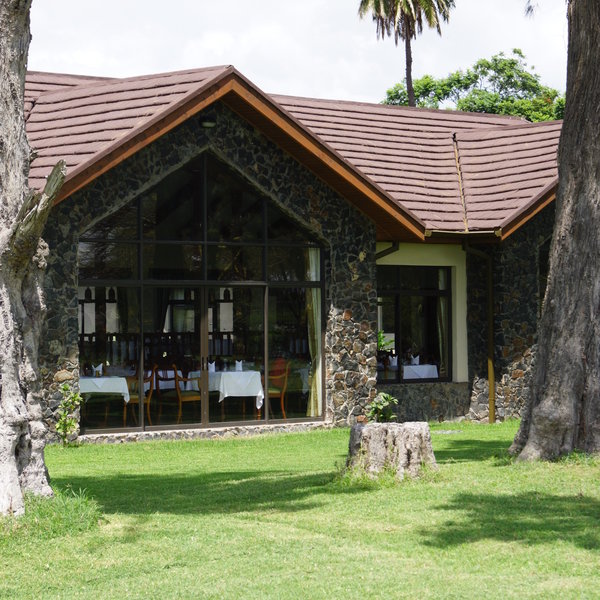
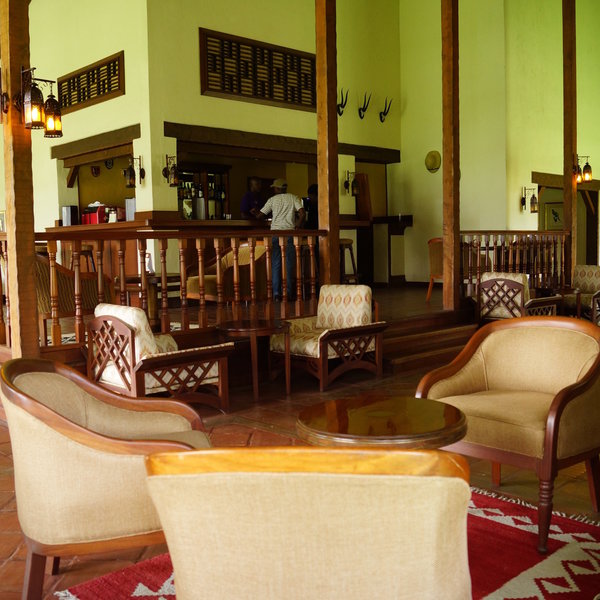
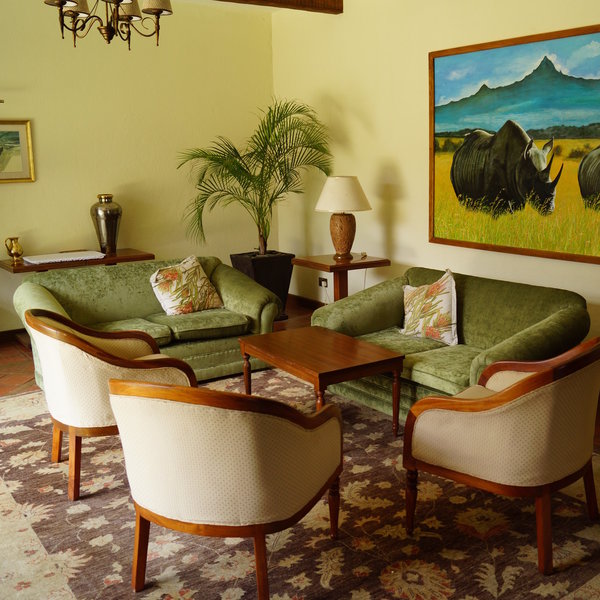
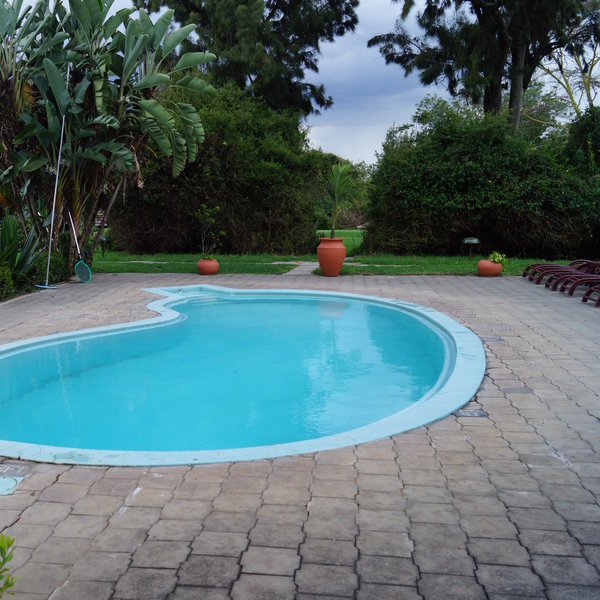
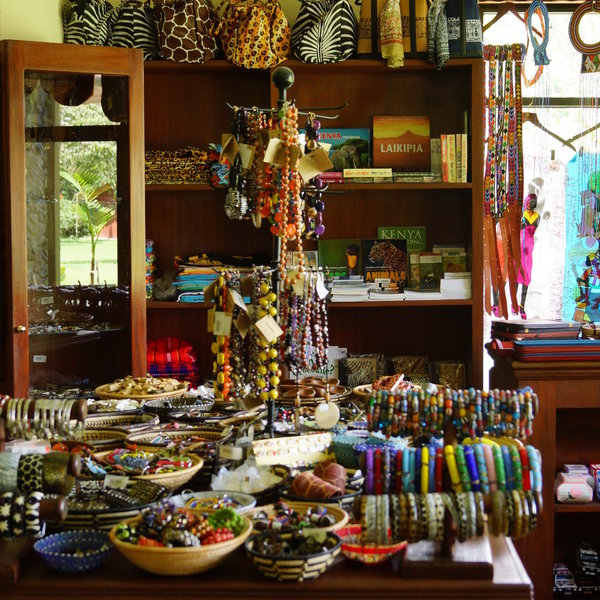
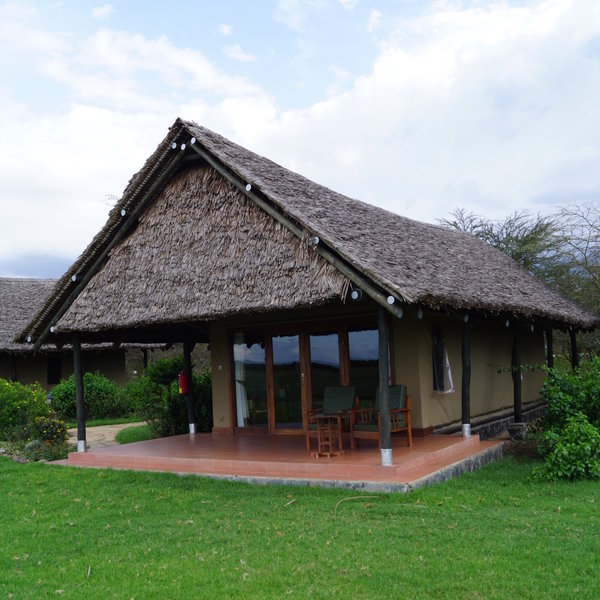
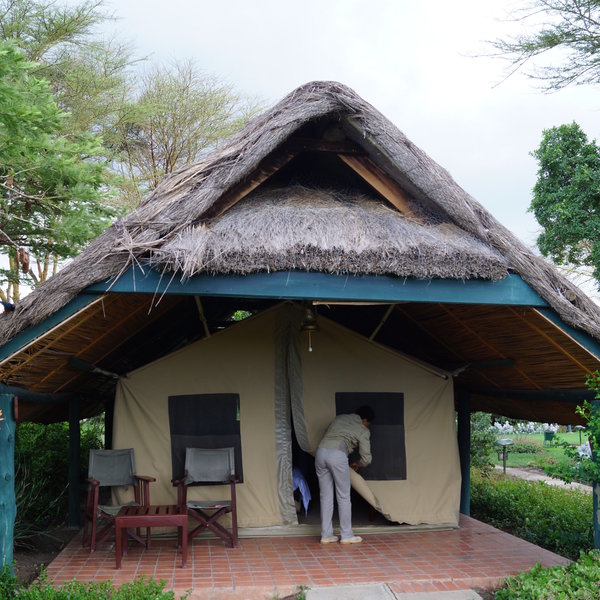
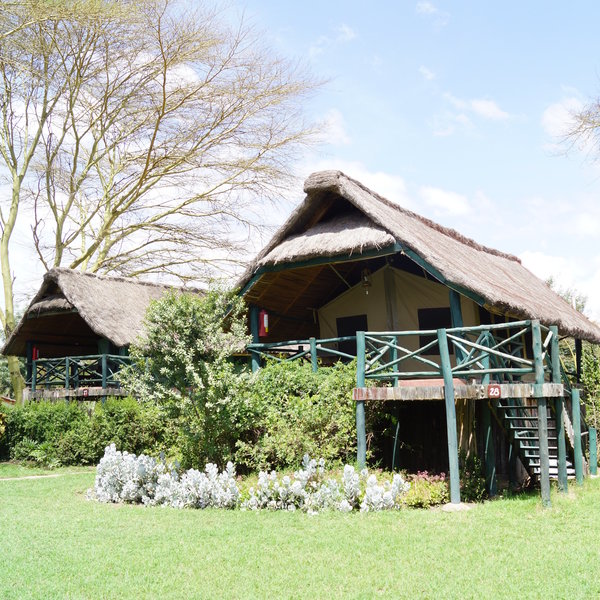
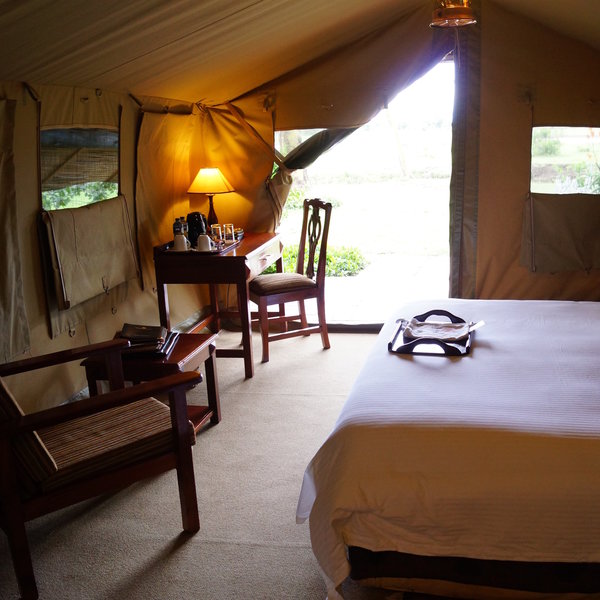
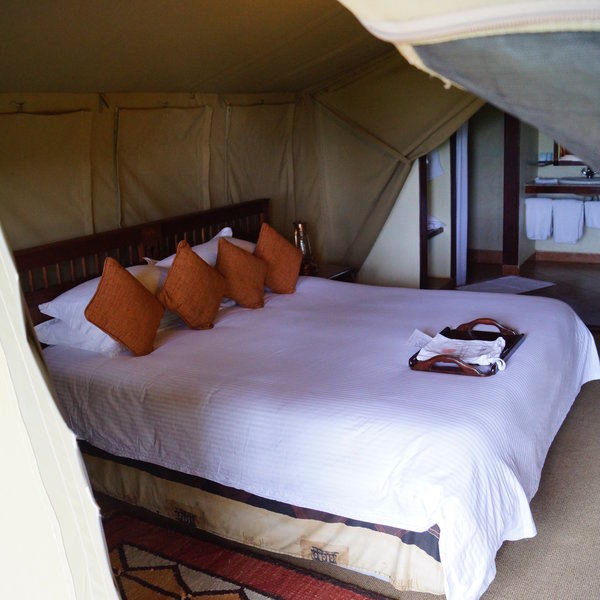
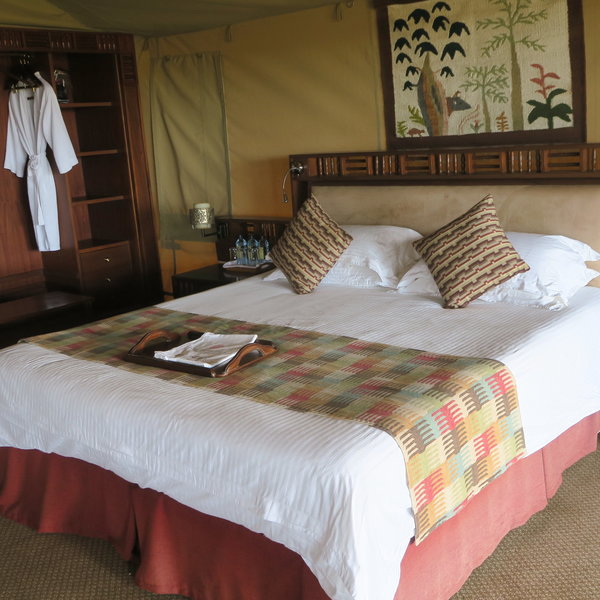
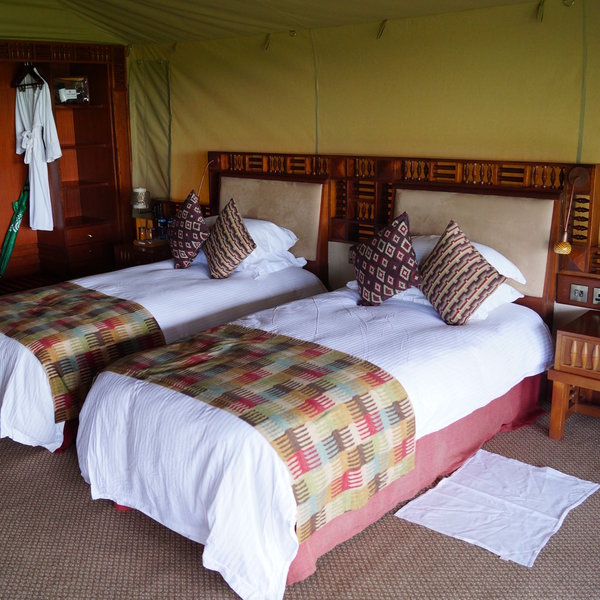
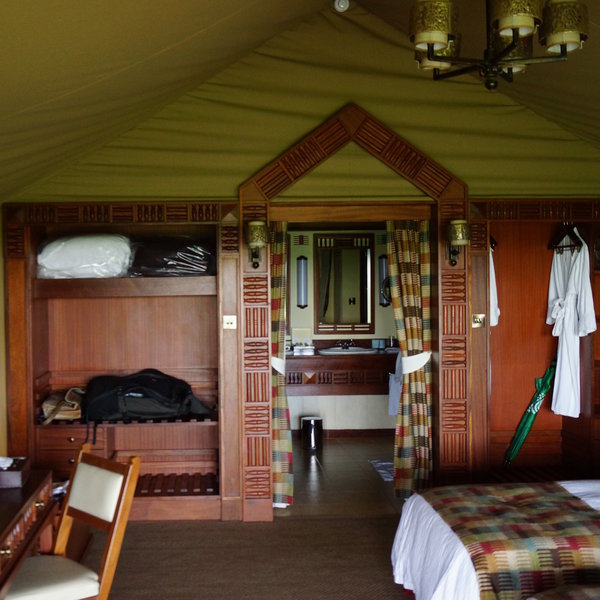
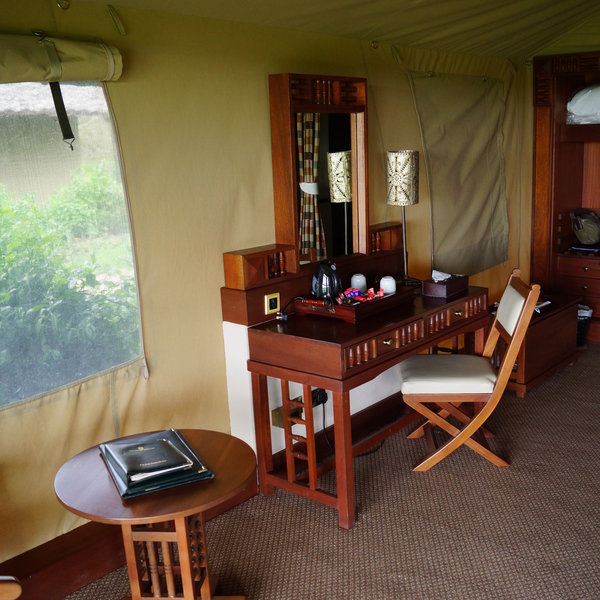
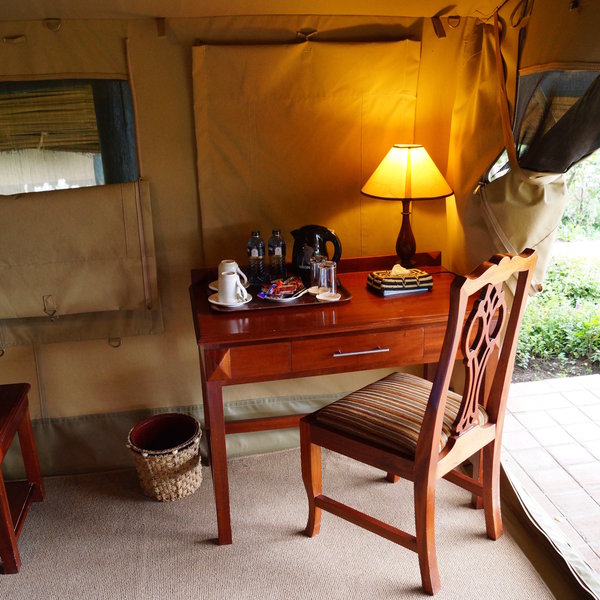
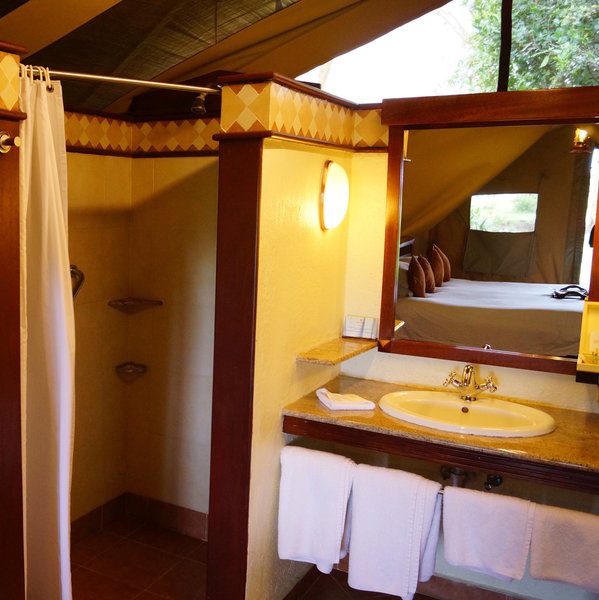
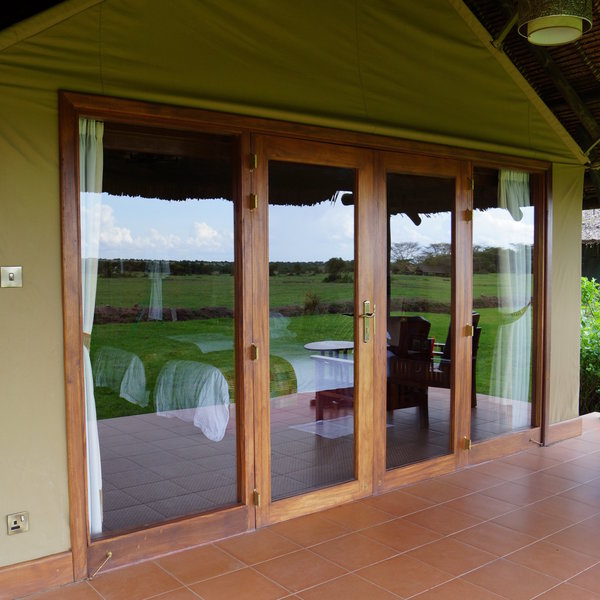
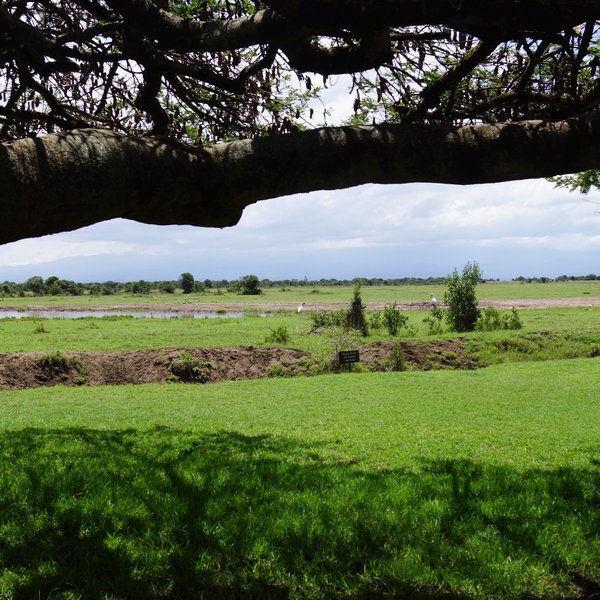
Expert Africa's gallery
When we travel we take lots of photos ourselves to give you a real and un-edited view of the safaris. See our 26 pictures of Sweetwaters Serena to get the candid view.
View gallerySweetwaters Serena Camp: Our full report
The oldest lodgings in the Ol Pejeta Conservancy, Sweetwaters Serena Camp is a large tented camp in the eastern ...
... sector of the conservancy, catering predominantly to a mid-range, drive-in group safari market. Part of the international Serena Hotels group whose largest shareholder is the Aga Khan Fund for Economic Development, the camp has full hotel facilities.
Sweetwaters Serena is one of eight Serena camps, lodges and hotels in Kenya, the most important of which is Mara Serena Safari Lodge in the western part of the Maasai Mara National Reserve.
Approaching Sweetwaters Serena from Nanyuki Airport, first impressions can be somewhat underwhelming as you leave the dusty outskirts of Nanyuki town, clear the formalities at the conservancy gate and drive across an open plain. Ten minutes later you turn into Sweetwaters' grove of acacias and palm trees near the waterhole and the overall impression improves. Set on level terrain, the cool reception and main central building under a red-tiled roof has floor-to-ceiling views through its large windows and French doors onto the conservancy, with the nearby waterhole – illuminated at night – taking centre stage.
Sweetwaters' waterhole is protected by a discreet electric fence and ditch from the camp, effectively bringing the wilds of the conservancy into the heart of the camp, with the tents spread around it in a rough semi-circle. The waterhole attracts plenty of wildlife, including impala, waterbuck, plains zebra and some of the wildlife for which Ol Pejeta is famous – rare Grevy's zebra, reticulated giraffe and occasionally white rhino. While you don't have any elevation from which to watch down on the waterhole, the wildlife that is attracted to it is often quite close to visitors, and the fence means you can approach on foot. At night, floodlights pick out nocturnal creatures, and also attract vast clouds of insects, including some spectacular moths and beetles (fortunately, mosquito controls in this area have largely removed that menace). It's worth bearing in mind that, while the waterhole and wildlife numbers are a big plus, the proximity of Nanyuki town on this eastern side of the conservancy means you can never quite escape the sense of being near an urban area: at night the town lights, and those of the vegetable polytunnel farms on the lower slopes of the mountain, are hard to miss.
There are two styles of guest tents at Sweetwaters – standard tents and deluxe tents. The 39 standard tents (12 doubles and 27 twins) stretch out through landscaped gardens to the north of the central areas, curling around to face the waterhole, while the superior tents, in a row known as the “Morani Wing" stretch around to the east.
The standard tents are fine, reasonably large canvas tents, with solid thatched roofs above and solid ensuite bathrooms behind. There's a small, shaded deck, with directors' chairs and a table, and inside either twin beds or a king-size double, a small writing desk and an armchair, electric lighting and power points. The tiled bathrooms include a conventional flush loo, single basin and a shower behind a curtain. Good towels and toiletries are provided. There's standard plumbing here and 24-hour hot water, so the only concessions to “camping" are the canvas walls of your tent and the fact that you have a conventional zip up tent front. For the best views of waterhole action, the lower-numbered, front room standard tents on the ground are best placed. Those in the second row, to the rear, are mounted on 2-metre high platforms, but views tend to be obstructed by vegetation.
In the Morani Wing, the 17 deluxe tents (seven doubles, eight twins, two triples), spread out to the east of the camp's central area, and are of a much higher standard. Here, despite the use of canvas walls, the sense of being in a comfortable hotel room is even more accentuated. Fully lockable French doors at the front open onto a large tiled deck, though the vinyl-covered armchairs are not what you would expect, and there's a disappointingly utilitarian feel to the decks, with no prettifying touches. Comfy recliners would be a good addition. Inside, however, the tents are bright and warmly furnished in multi-coloured hues, although there is an awful lot of heavy wood paneling, which is an unexpected touch. The rooms have plenty of space, the beds are firm and very comfortable, with high-weave sheets, and the bathrooms have double basins and are fitted out to a reasonably high standard with glass shower doors as opposed to curtains. While the camp perimeter fence runs fairly close to the front of these tents, so wildlife can sometimes be seen quite near, the deluxe tents are all some distance beyond the waterhole and the tents at the far end are a 300-metre (5–7-minute) walk from the dining room and pool.
For wheelchair users there is one adapted superior tent, with wide access and rails, and likewise one standard with ramps. Other superior tents are relatively practical, too. Wheelchairs are also available to borrow. The camp driver/guides are used to having disabled passengers in their vehicles, though these are not adapted.
The main activities at Sweetwaters are morning and afternoon game drives in the Ol Pejeta Conservancy, using the camp's closed Land Cruisers with roof hatches (some guests will be using their own vehicles and some come in group road tours from Nairobi, but Expert Africa's tailor-made safaris in Laikipia invariably use the airport at Nanyuki and the camp's own vehicles). Game drives around the well-managed and densely wildlife-populated conservancy are invariably productive and rewarding. White rhinos are almost always easily seen, while the much more numerous black rhinos tend to be elusive and skittish, with sightings more fleeting.
Bush walks are easy to organize, go direct from camp and return after a loop through the bush, and are accompanied by a scout and a licensed gun-holding guide. You can get relatively close to the white rhinos on these, though black rhinos, elephants and big cats are deliberately avoided.
In common with all the camps on Ol Pejeta, you'll be offered the option of visiting the “Endangered Species Boma" – a large, secure paddock for the conservancy's two female northern white rhinos (extra charge of U$50 per person) and the Chimpanzee Sanctuary, a welfare facility (rather than a breeding and conservation project) for previously captive and orphaned chimpanzees from other parts of Africa. We recommend the visit to the northern whites, which allows you to get very close to the last two remaining individuals of this subspecies, and also includes close sightings of Jackson's hartebeest and Grevy's zebra, and the chance to pay your respects to the blind black rhino Baraka.
Back at camp, the small swimming pool is an attractive magnet and close to the dining room and bar. There are plans for the pool to be extended, more in-keeping with the size of the camp. There's also a small spa and beauty treatment centre.
Unusually, Sweetwaters Serena has no tip box in reception. A tip can be added to your final drinks and extras bill and will be shared among the staff.
Geographics
- Location
- Laikipia, Kenya
- Ideal length of stay
- 2–3 nights
- Directions
- 21km (25mins) to Nanyuki Airport.
- Accessible by
- Fly-and-Transfer
Food & drink
- Usual board basis
- Full Board
- Food quality
- Hotel-style meals are offered with a reasonable range of choices, usually at least partly as a buffet. When we last visited in 2019, we didn’t get a chance to sample the food, but during a previous stay, lunch started with a good, creamy vegetable soup. The lunch buffet included lots of salads, black bean curry, nice grilled fillets of red snapper, tough slices of steak in a nondescript gravy and some local choices, like butternut squash with githeri (Kikuyu bean and corn stew).
Dinner was a Mongolian-style barbecue (sliced raw meat and vegetables, stir-fried and sizzled to order).
Breakfast was a copious buffet. - Dining style
- Individual Tables
- Dining locations
- Indoor Dining
- Further dining info, including room service
- Breakfast is served from 06:30-08:30, lunch from 12:30-14:30 and dinner from 19:30-21:00. Tea and coffee are available all day long and there's a wake-up service with tea or coffee and cookies from 06:00 and afternoon tea with cookies at 16:00. Room service is available at no extra charge.
- Drinks included
- Bottled drinking water is provided in rooms. Water and additional drinks at the bar are extra but reasonably priced. Local beers or a glass of South African wine cost around U$5.
Children
- Attitude towards children
- Sweetwaters welcomes children of all ages. 6 year olds and below stay free of charge.
- Property’s age restrictions
- None.
- Special activities & services
- Children’s menus and early dinners are available.
Babysitting (by ladies from housekeeping) can be arranged. There is no formal payment rate, but a tip is expected. - Equipment
- Baby cots and high chairs are available.
- Generally recommended for children
- Sweetwaters is a safe and dependable choice for younger families and the atmosphere is informal and busy enough to avoid any sense that your offspring might be disturbing others.
- Notes
- Children can freely roam the grounds inside the electric fence. Little ones would obviously need supervision, and bear in mind that bushbuck and waterbuck also roam the grounds. Bushbuck are medium-sized, timid and essentially harmless antelope (think “roe deer") but waterbuck are a much larger antelope and can very occasionally be aggressive (think “cow"). The camp's security staff generally keep animals in control, and a baboon chaser is stationed at the end of the standard wing to keep those pesky primates in check.
Our travellers’ wildlife sightings from Sweetwaters Serena
Since mid-2018, many of our travellers who stayed at Sweetwaters Serena Camp have kindly recorded their wildlife sightings and shared them with us. The results are below. Click an animal to see more, and here to see more on our methodology.

100% success

0% success

0% success

0% success

0% success

0% success

0% success

0% success

0% success

0% success

0% success

0% success

0% success

0% success

0% success

0% success
Communications
- Power supply notes
- Electricity is provided by the National Grid. There is also solar power with two back-up generators so electricity is available 24 hours a day. Hairdryers are provided in rooms.
- Communications
- Airtel and Safaricom signals are good. There is free Wi-Fi throughout the lodge.
- TV & radio
- There are TVs (DSTV sallelite channels) in the guest common room.
- Water supply
- Borehole
- Water supply notes
- Borehole water is treated in their own treatment plant. Bottled water for drinking is provided to all guests in their tents on a daily basis. This is usually one half-litre bottle per guest per day. Extra bottles may be provided on request, but the camp clearly expects most guests to buy water with meals.
Health & safety
- Malarial protection recommended
- Yes
- Medical care
- A nurse is available on site at all times. First-aid kits are available. In addition, Nanyuki Cottage Hospital is very good – one of Kenya’s best outside Nairobi. In an emergency, a helicopter could land easily at Sweetwaters.
- Dangerous animals
- Moderate Risk
- Security measures
- There is 24-hour security around the camp. In addition, Ol Pejeta has armed Kenya Wildlife Service rangers.
- Fire safety
- Every tent has a fire extinguisher and smoke detector. Staff do fire drills every three months and fire training every six months.
Activities
4WD Safari
Birdwatching
Guided walking safari
Night drive
Private activities
Extras
- Disabled access
- In Place
- Laundry facilities
- Laundry is available as an extra service, priced by the item, machine washed, tumble-dried and ironed.
- Money
- There’s a guest safe and forex service at reception.
- Accepted payment on location
- All major currencies are accepted, as are Mastercard, Visa and Amex with no surcharges.
Plan and book your trip with Expert Africa
All of our trips are tailor-made, so we'll always adapt them to suit you. Talk to an Expert and let us plan and arrange your perfect trip.

Talk to an Expert
Call or email us now! We’ll match you with the Specialist in our team who is best suited to help you. Then together we can start planning your trip.

Set up your itinerary
Based on our experience and your ideas, your specialist will create a detailed, costed itinerary. We’ll refine it together, until we have a trip that you’re perfectly happy with.

Prepare for your trip
The same Specialist will make the seamless arrangements for your trip, send you detailed travel documents, and be available to answer any questions before you depart.

Travel with peace of mind
After you set off, you’ll be cared for by our partners in Africa, most of whom have worked with Expert Africa for decades. And if you ever need us urgently, we’re available 24/7.

When you return
We love to learn about your trip, and so will always be grateful if you’ve the time to give feedback to your Specialist when you return.
Sweetwaters Serena Camp's location
Look closer at the environment and surroundings of Sweetwaters Serena.
Excursions from Sweetwaters Serena
Optional extra day-trips and excursions possible whilst you're staying at Sweetwaters Serena. Talk to us: these are usually best arranged before you go.
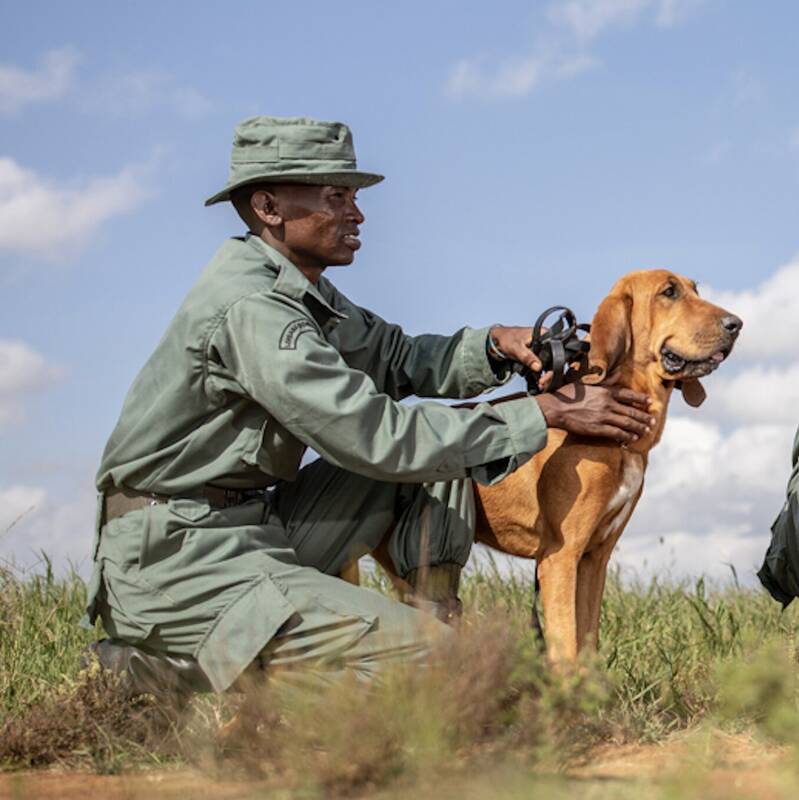
Anti-poaching Dogs Display
Approx. one hour
Interact with the dog keepers and learn about what it takes to look after the specially trained canine team. Guests are encouraged to try and evade the sniffer dogs, not only is this great fun, but it helps to offer genuine training for the dogs.
More about Anti-poaching Dogs Display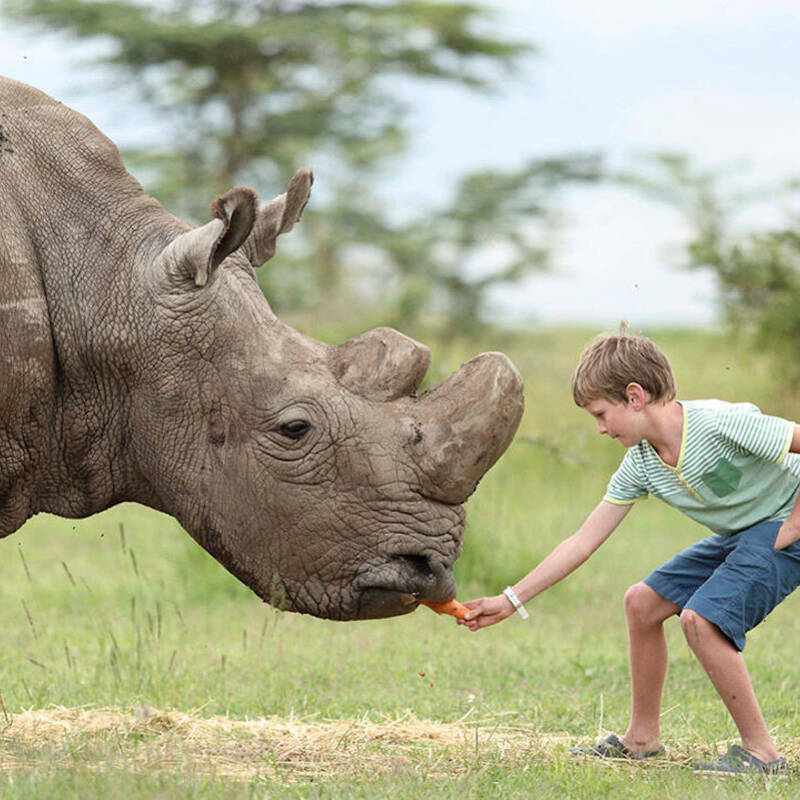
Northern White Rhinos visit
One hour, usually as part of your drive
Visit the Endangered Species Enclosure at Ol Pejeta Conservancy for a close encounter with the last two remaining northern white rhinos. You can visit either by game drive vehicle or visit on horseback if you're an experienced rider. Other rare species include Jackson's hartebeests and Grevy's zebras.
More about Northern White RhinosOther lodges in Laikipia
Alternative places to stay in this same area.
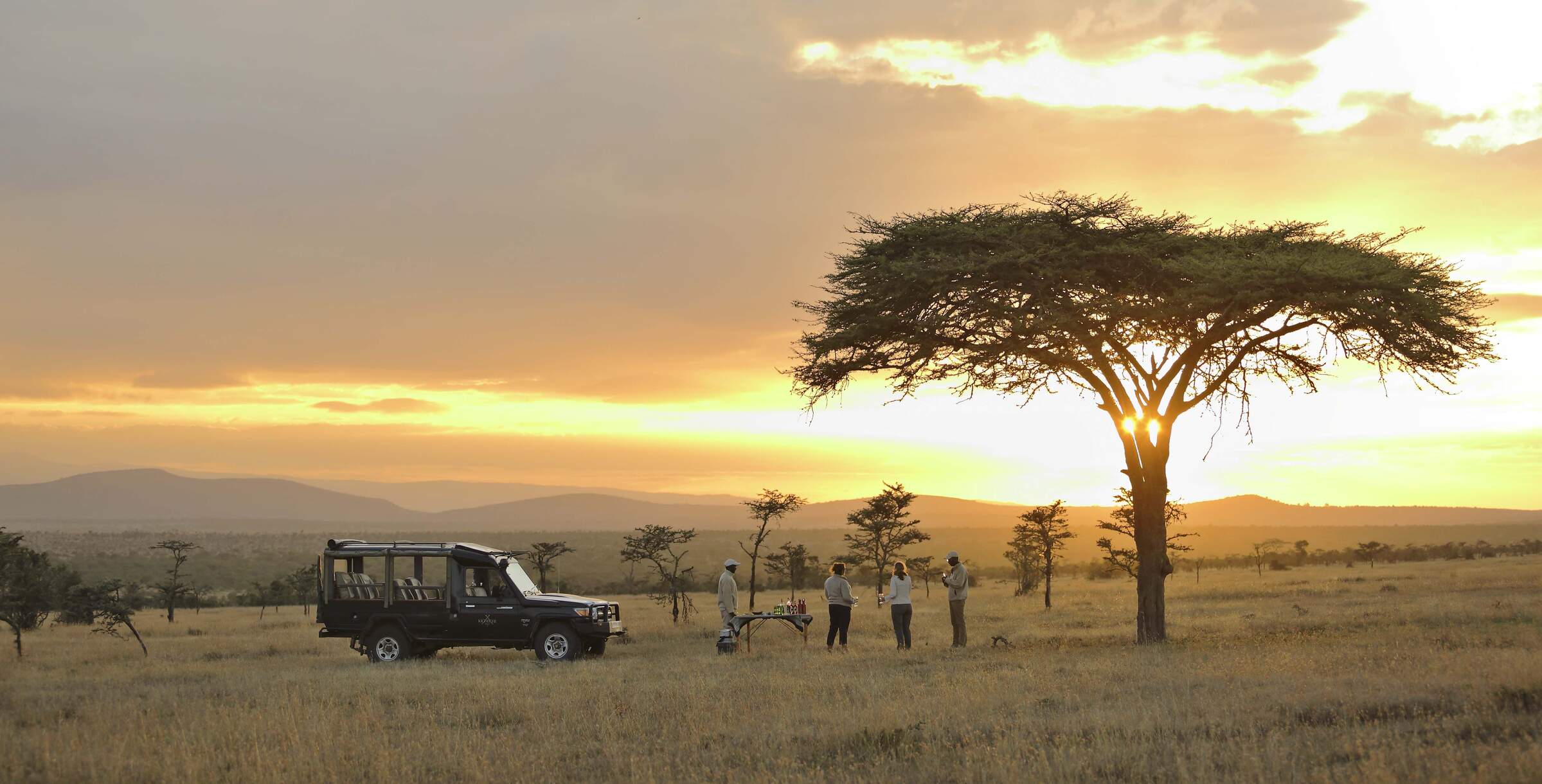
Kicheche Laikipia
Kicheche Laikipia is the most luxurious tented camp of the handful of places to stay in the Ol Pejeta Conservancy in central Laikipia.
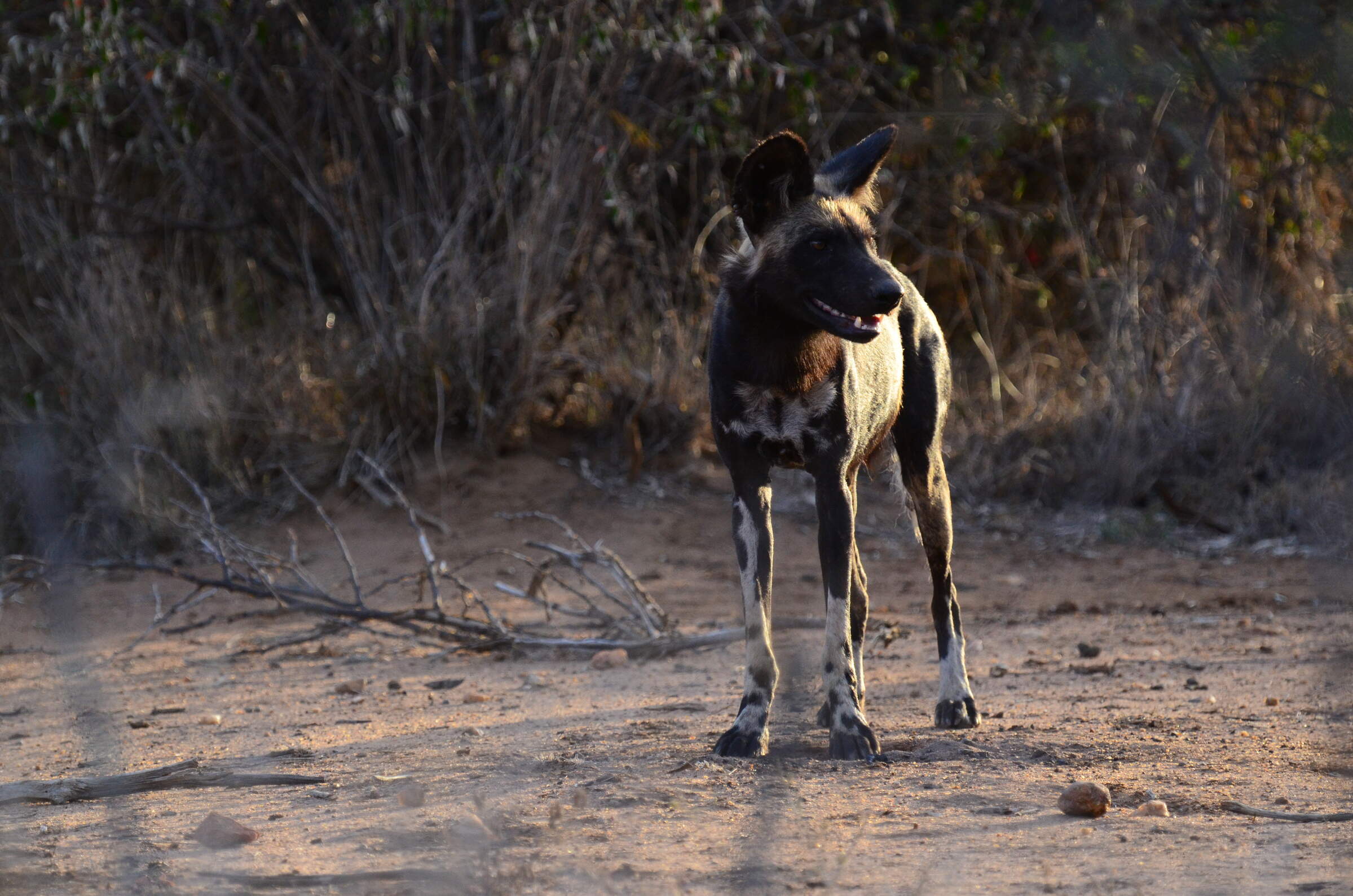
Laikipia Wilderness
Laikipia Wilderness is a rustic owner-managed bush camp, in excellent wild dog territory, offering outstanding guiding.
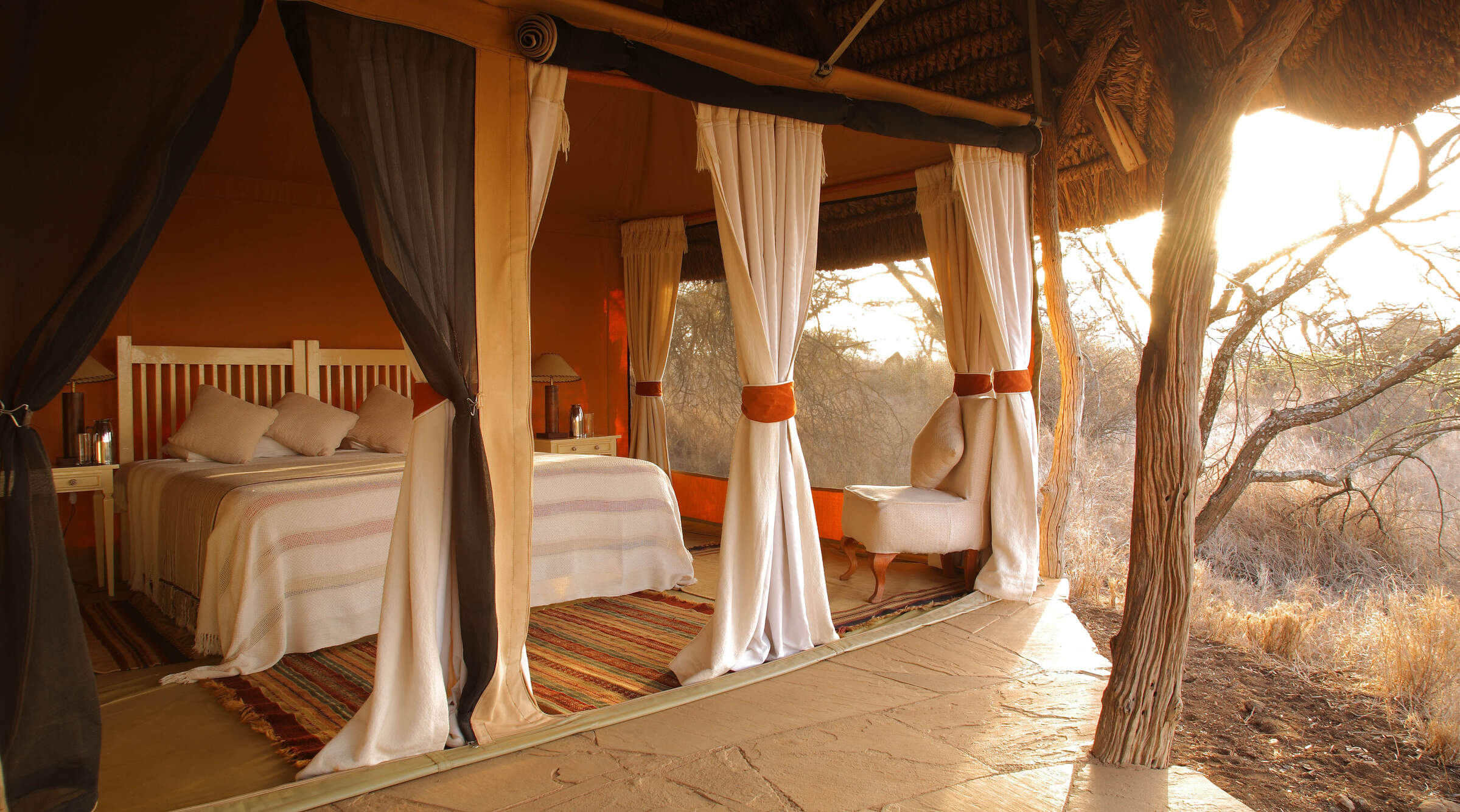
Lewa Safari Camp
Lewa Safari Camp is a comfortable and homely tented lodge, located in the Lewa Conservancy and offering a relatively exclusive safari away from mass tourism.
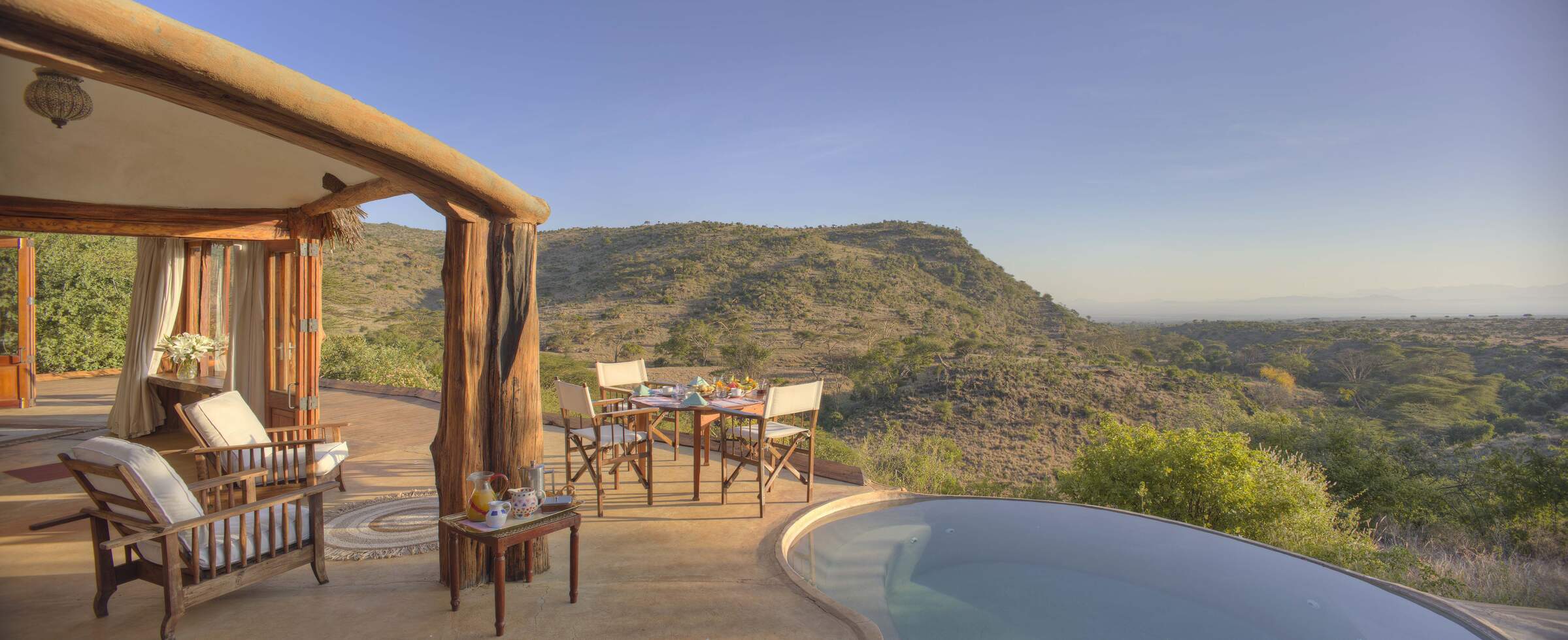
Lewa Wilderness
Lewa Wilderness is a comfortable, fenced safari lodge with nine cottages, great views and a huge range of activities.
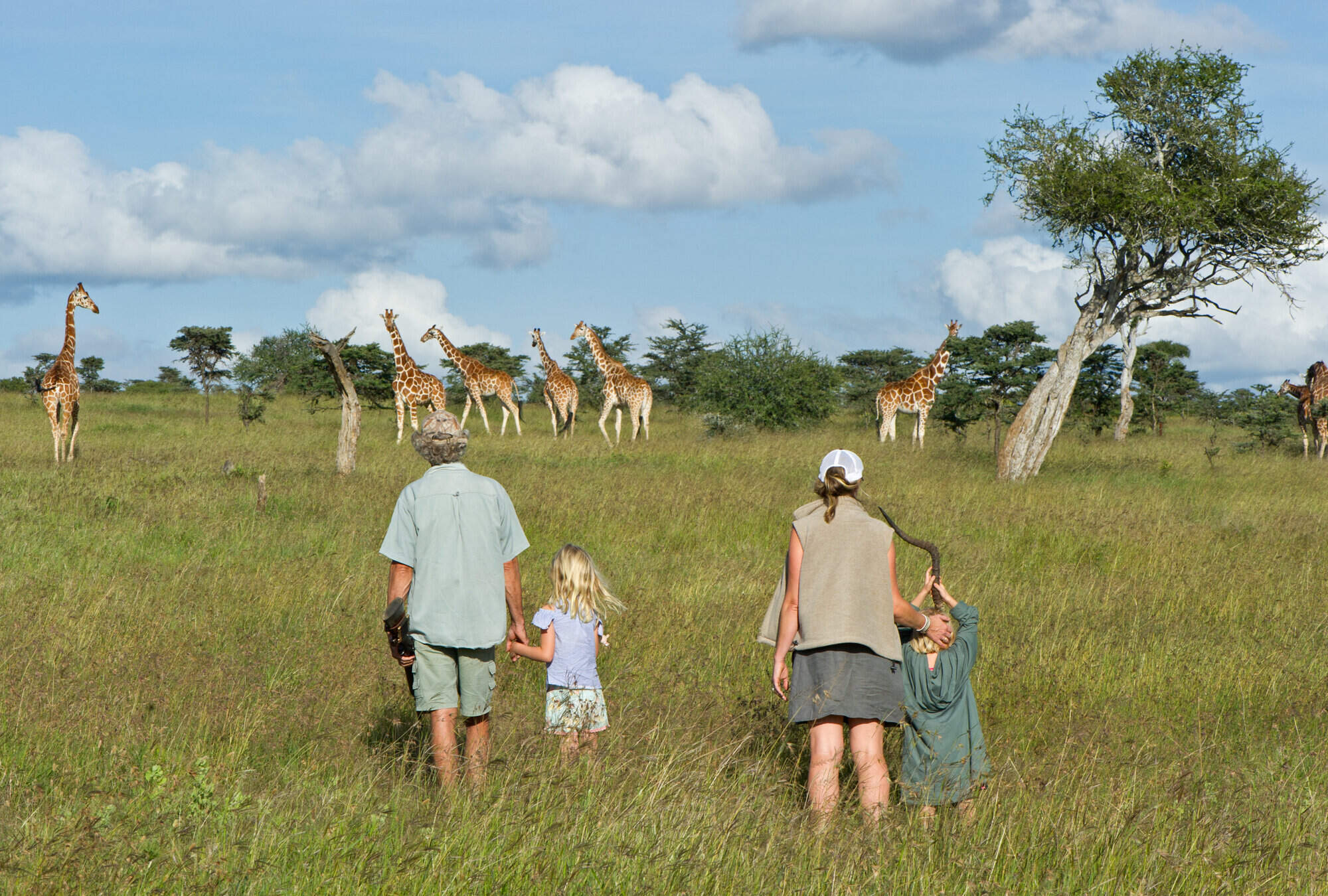
El Karama Lodge
El Karama is a comfortably rustic, very personal, riverside eco-lodge on a game-rich private ranch in Laikipia, an hour’s drive north of Nanyuki airport.
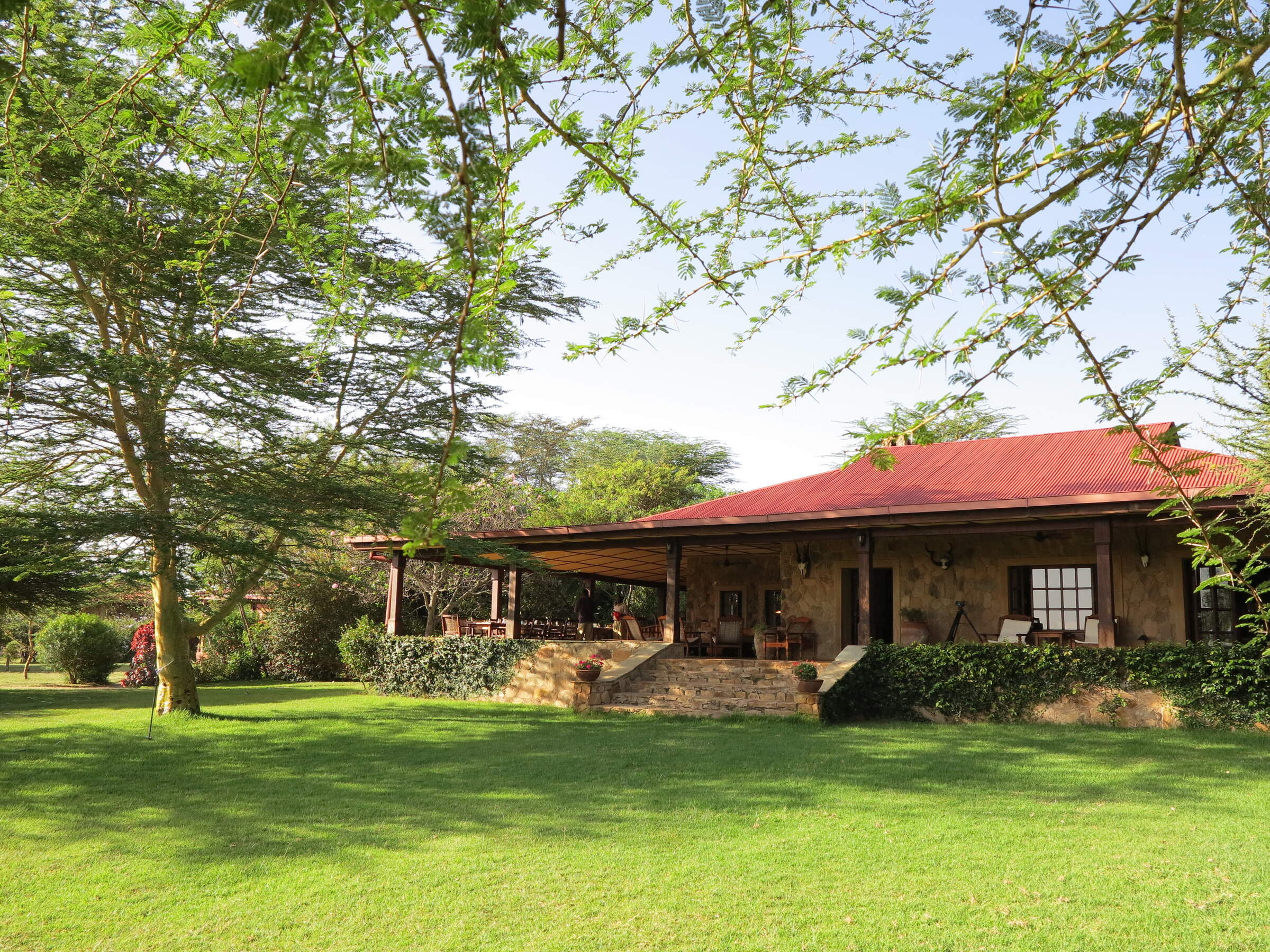
Sosian
Sosian Lodge is a distinctive, estancia-style ranch house on a former cattle ranch, with great opportunities for riding, relaxing and seeing wild dogs and other savannah wildlife.
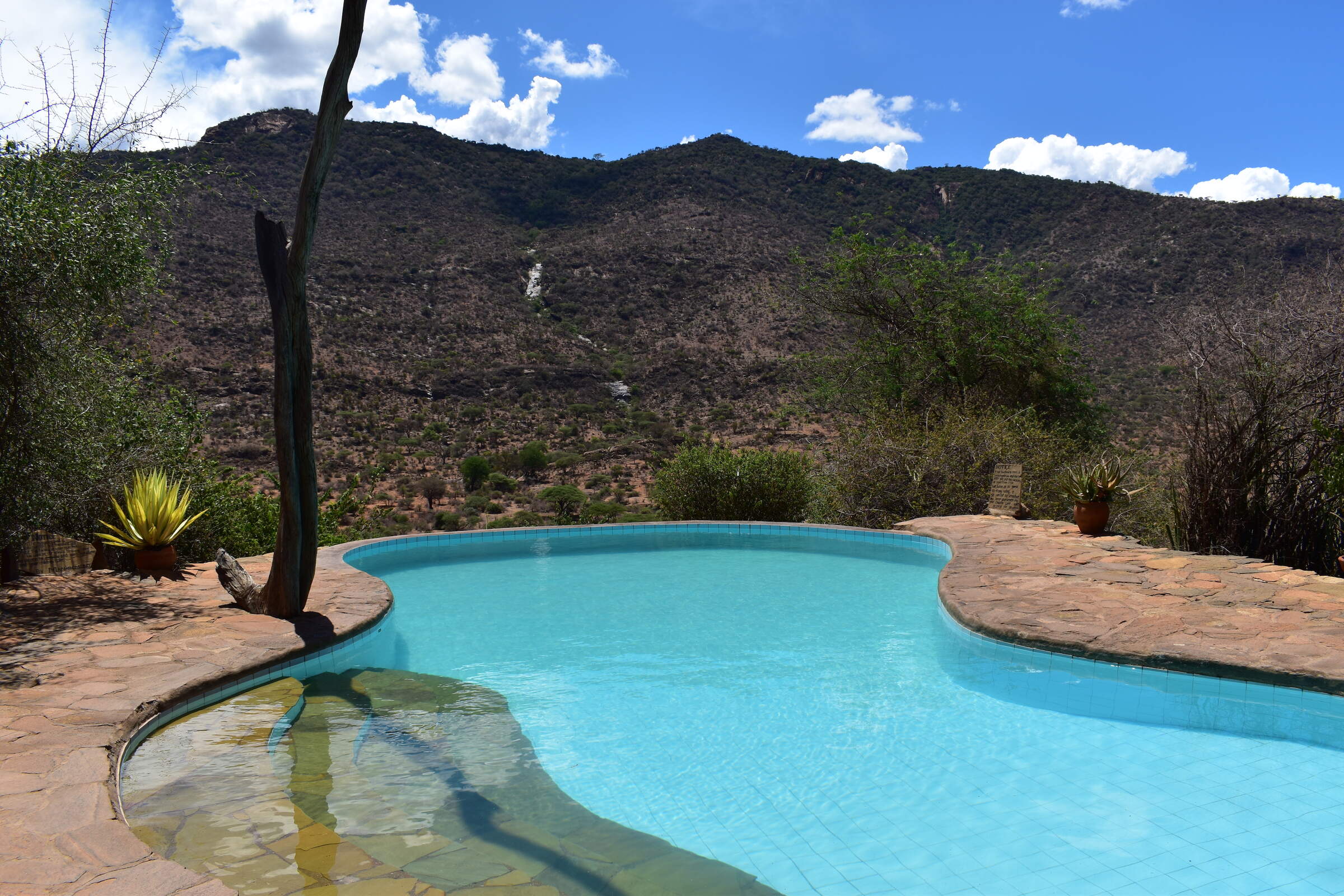
Il Ngwesi Eco-Lodge
The community-owned Il Ngwesi Eco-Lodge sits atop a small hill in the remote Il Ngwesi Group Ranch, a two-hour drive north of Lewa Conservancy in north-eastern Laikipia.
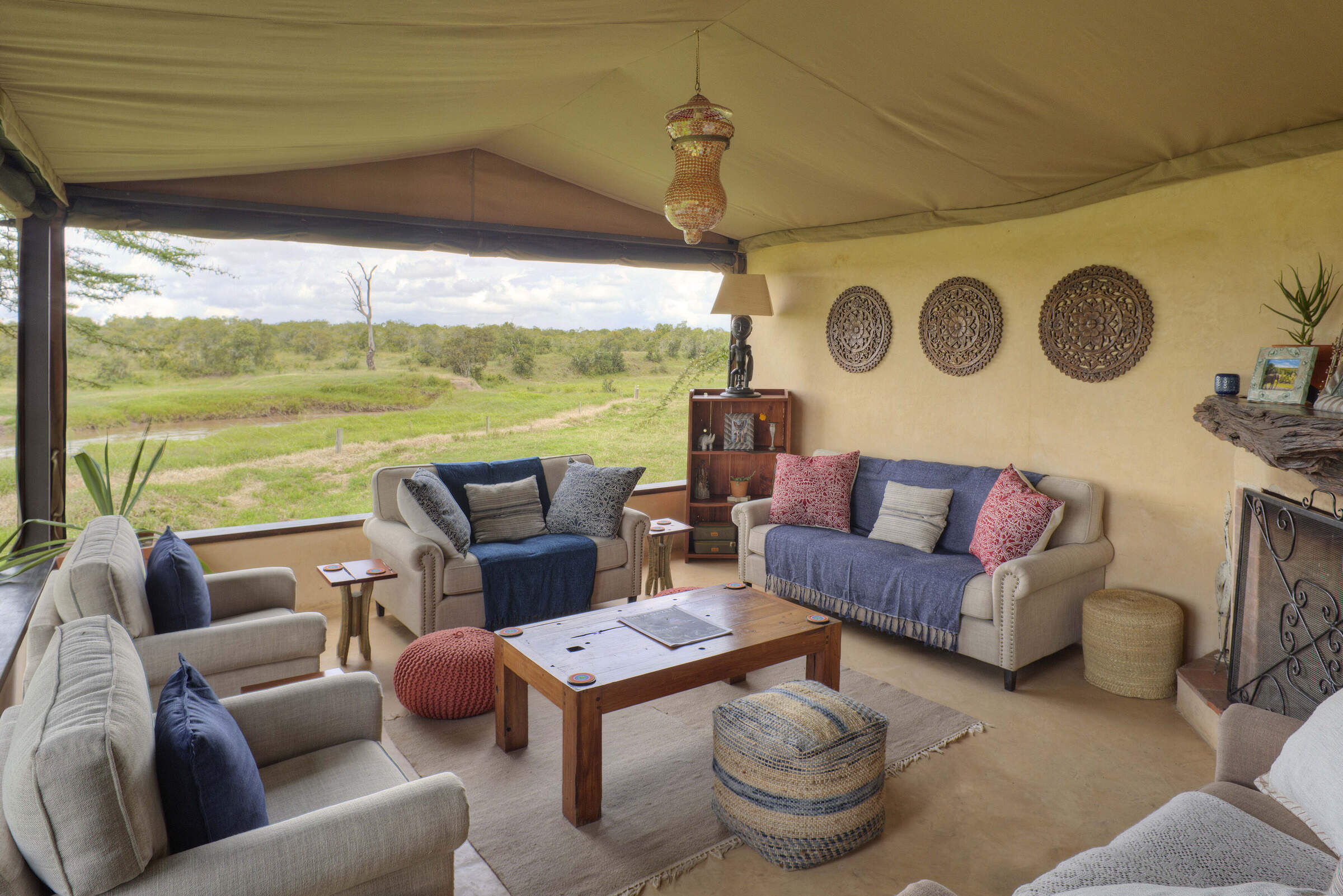
Ol Pejeta Bush Camp
Ol Pejeta Bush Camp is a simple camp, with comfortable tents, delivering an authentic wilderness experience backed up by good food and guiding.
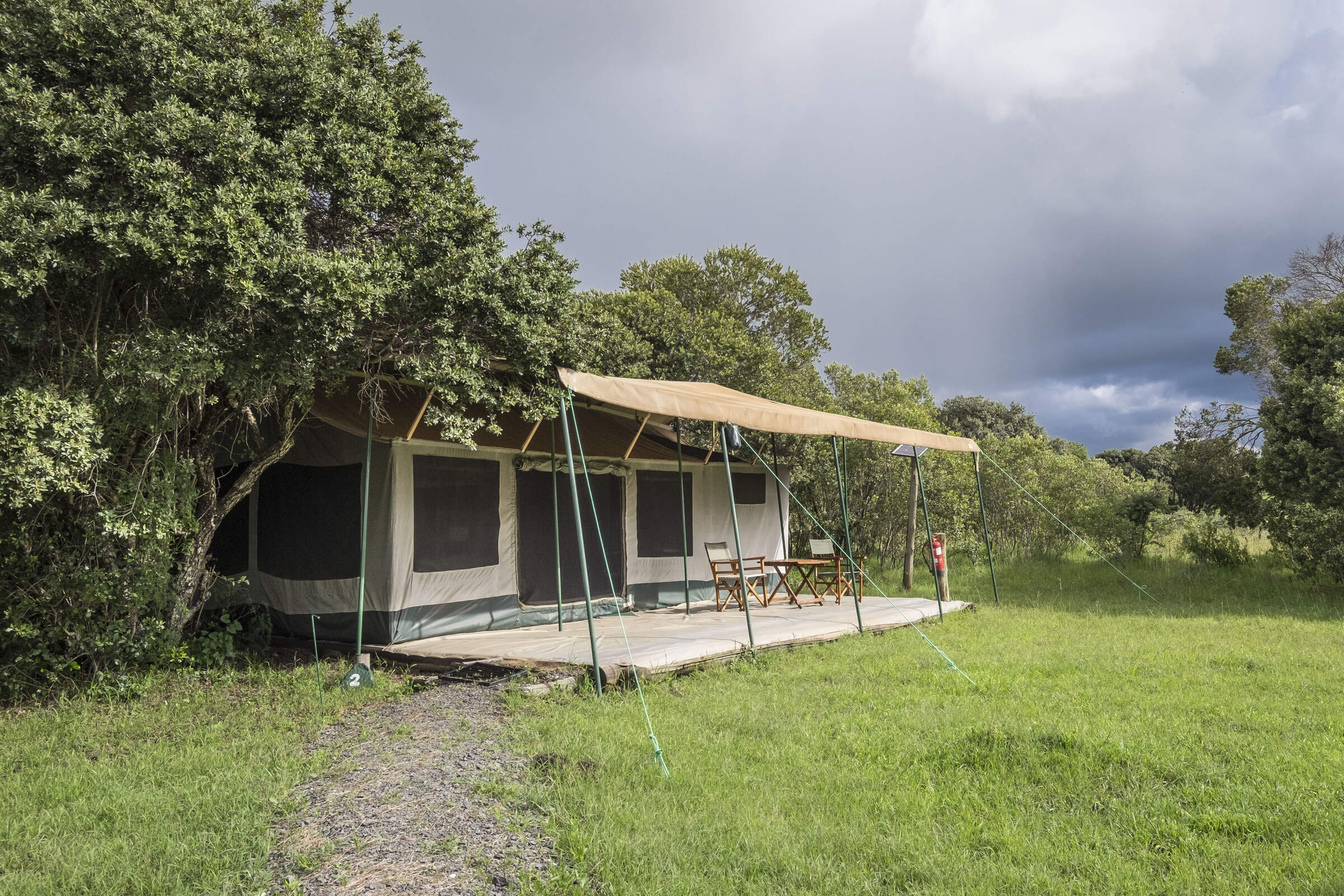
Porini Rhino Camp
Porini Rhino Camp is a small, simple, well established tented camp, with a keen focus on sustainable and low-impact tourism.
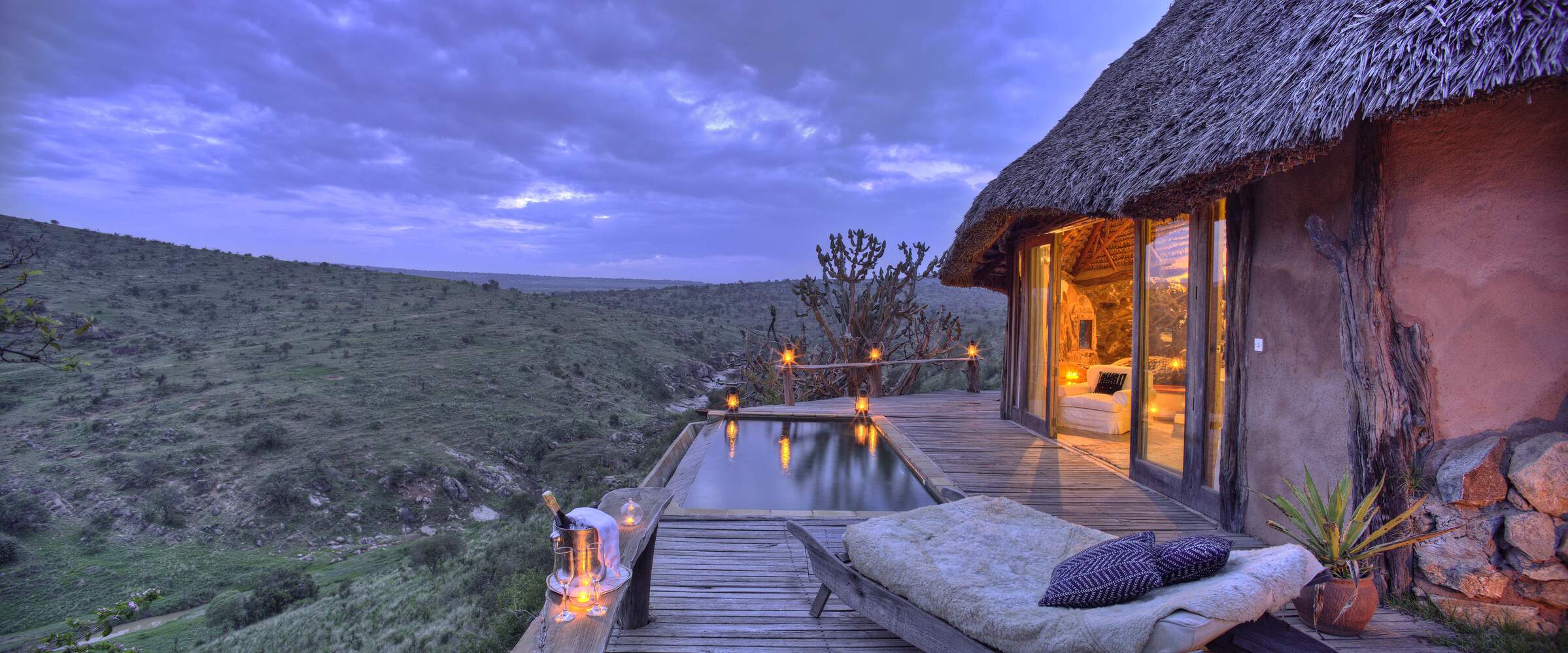
Borana
Borana is a comfortable and striking lodge on the Borana Conservancy in eastern Laikipia, offering pleasant accommodation with good food and service and a very wide range of activities.
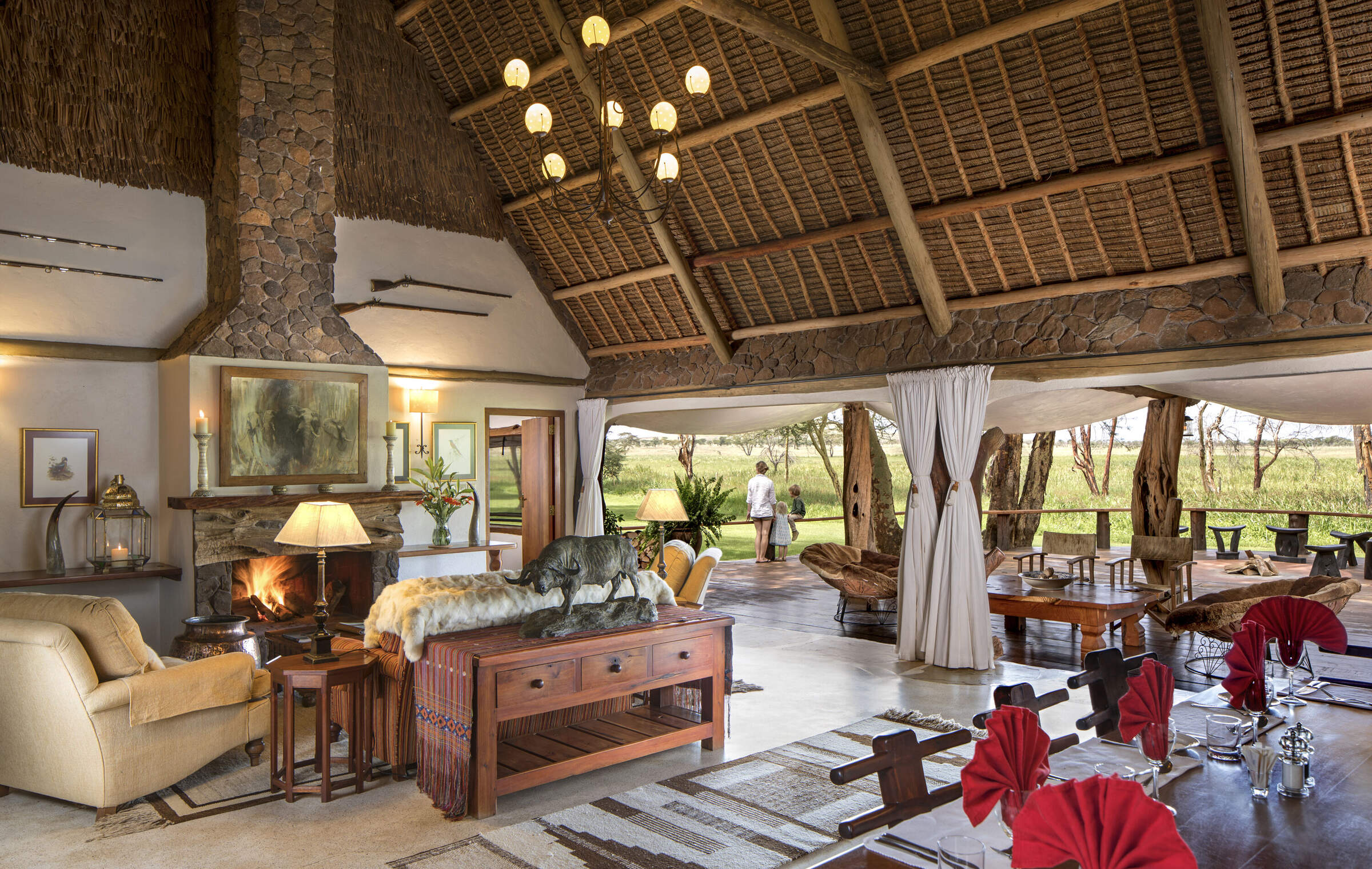
Sirikoi
Sirikoi is a small, very high-quality safari camp with excellent service and food and a wide selection of activities.
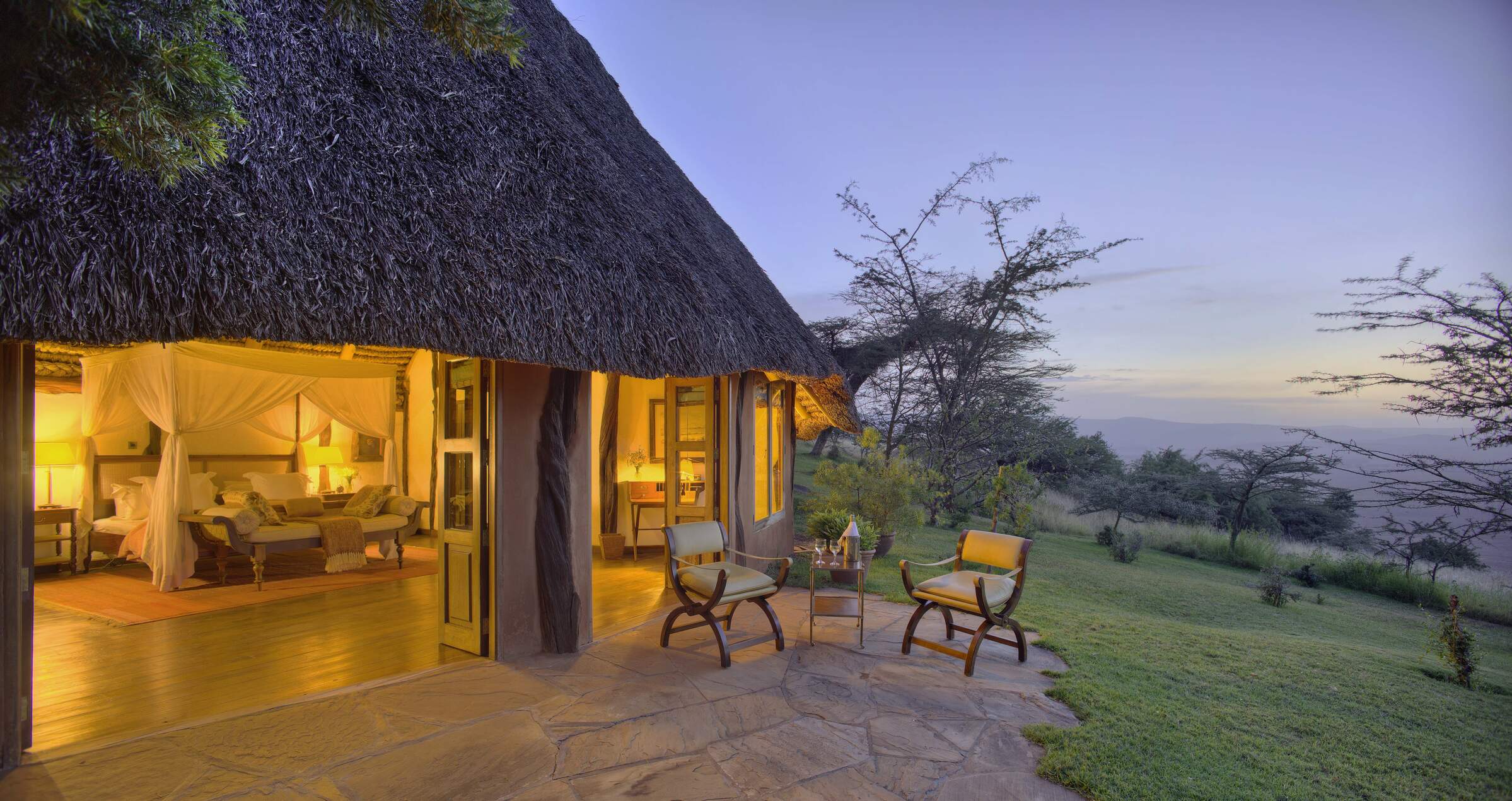
Kifaru House
Kifaru House is a small, stylish safari lodge in the Lewa Conservancy, with beautiful views across the landscape.
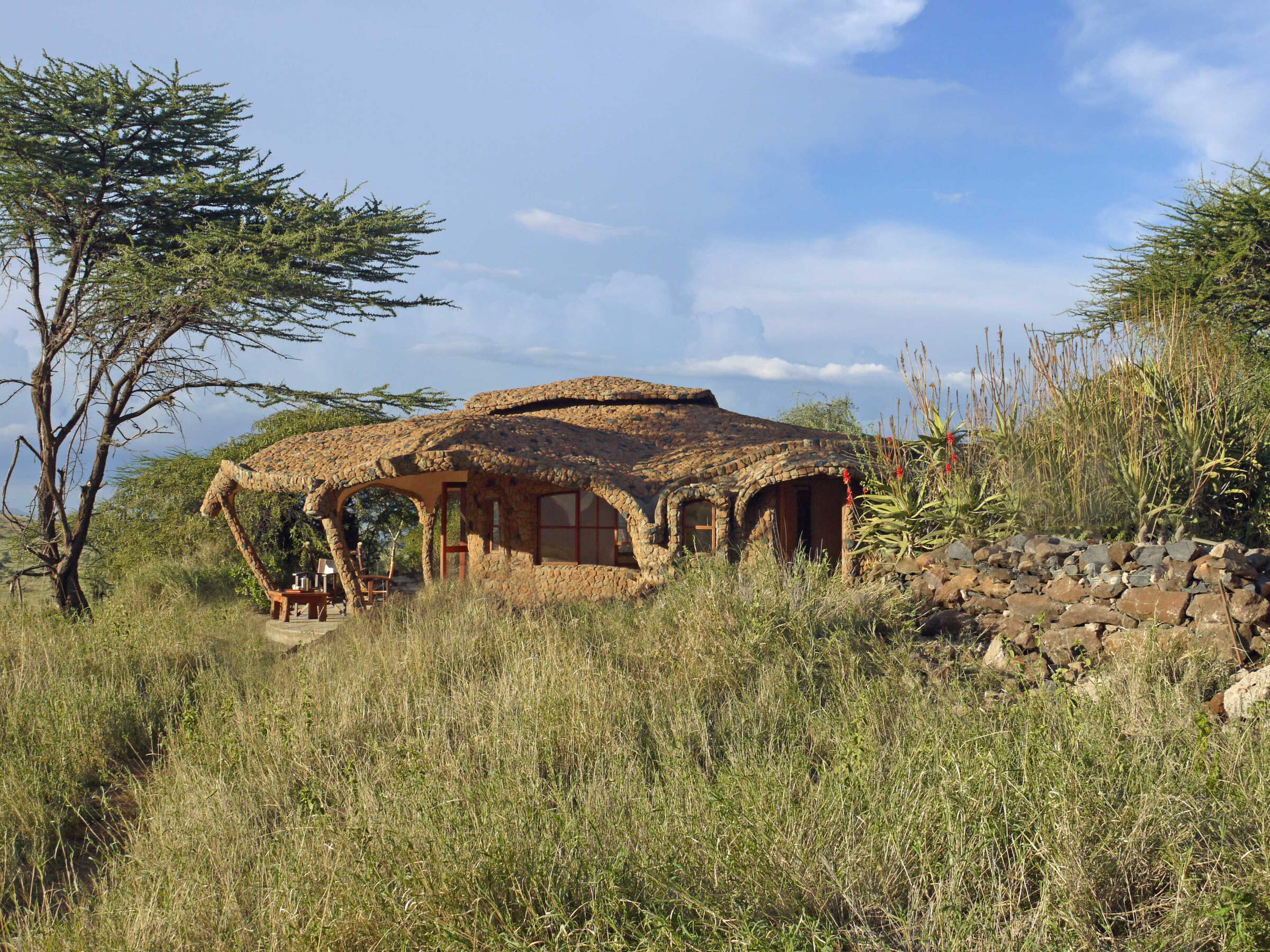
Lewa House
Lewa House is a very comfortable, boutique safari lodge located on the Lewa Conservancy, north of Mount Kenya.
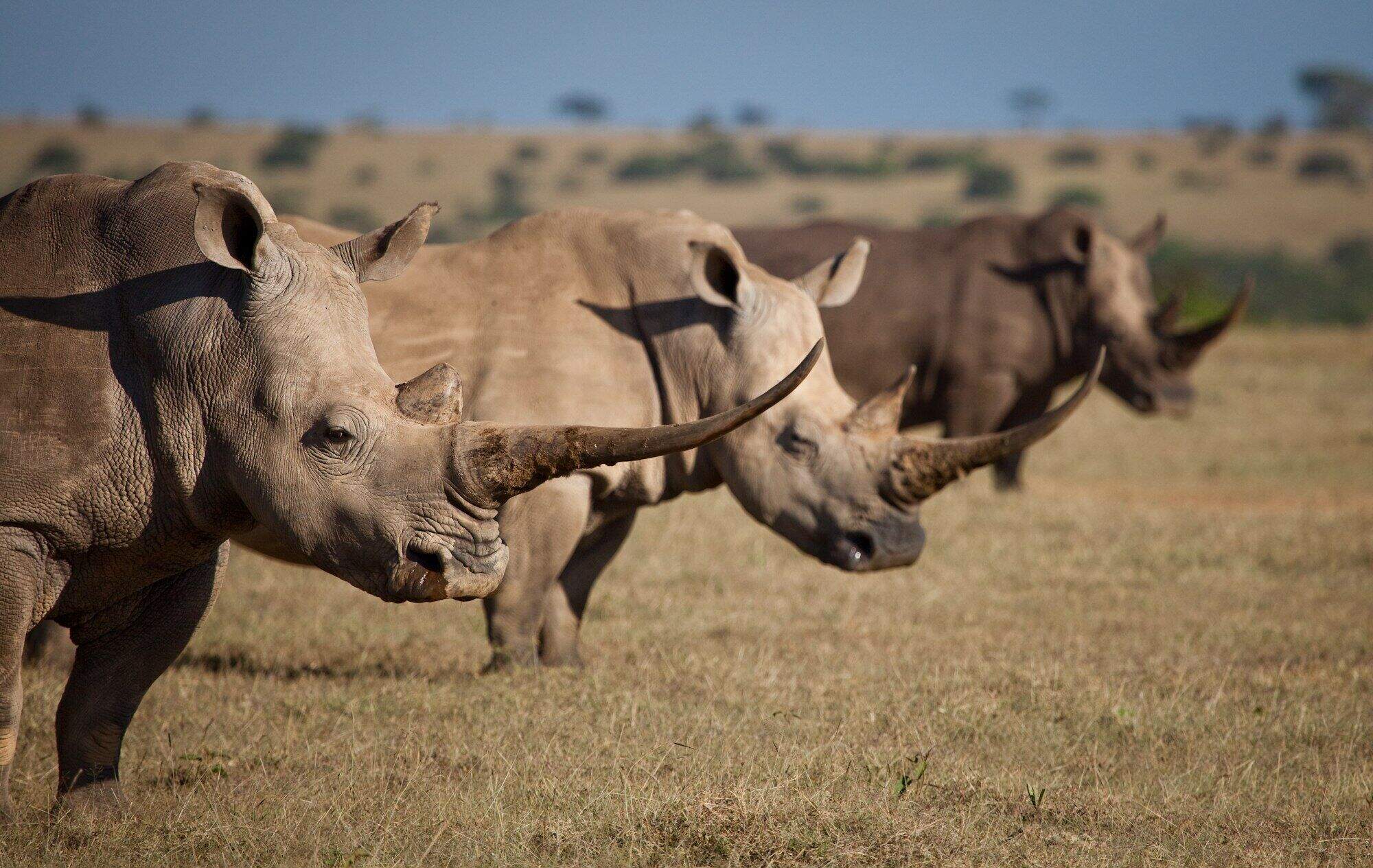
Solio Lodge
Solio Lodge is an exclusive and luxurious bush lodge set in the private Solio Game Ranch in southern Laikipia.
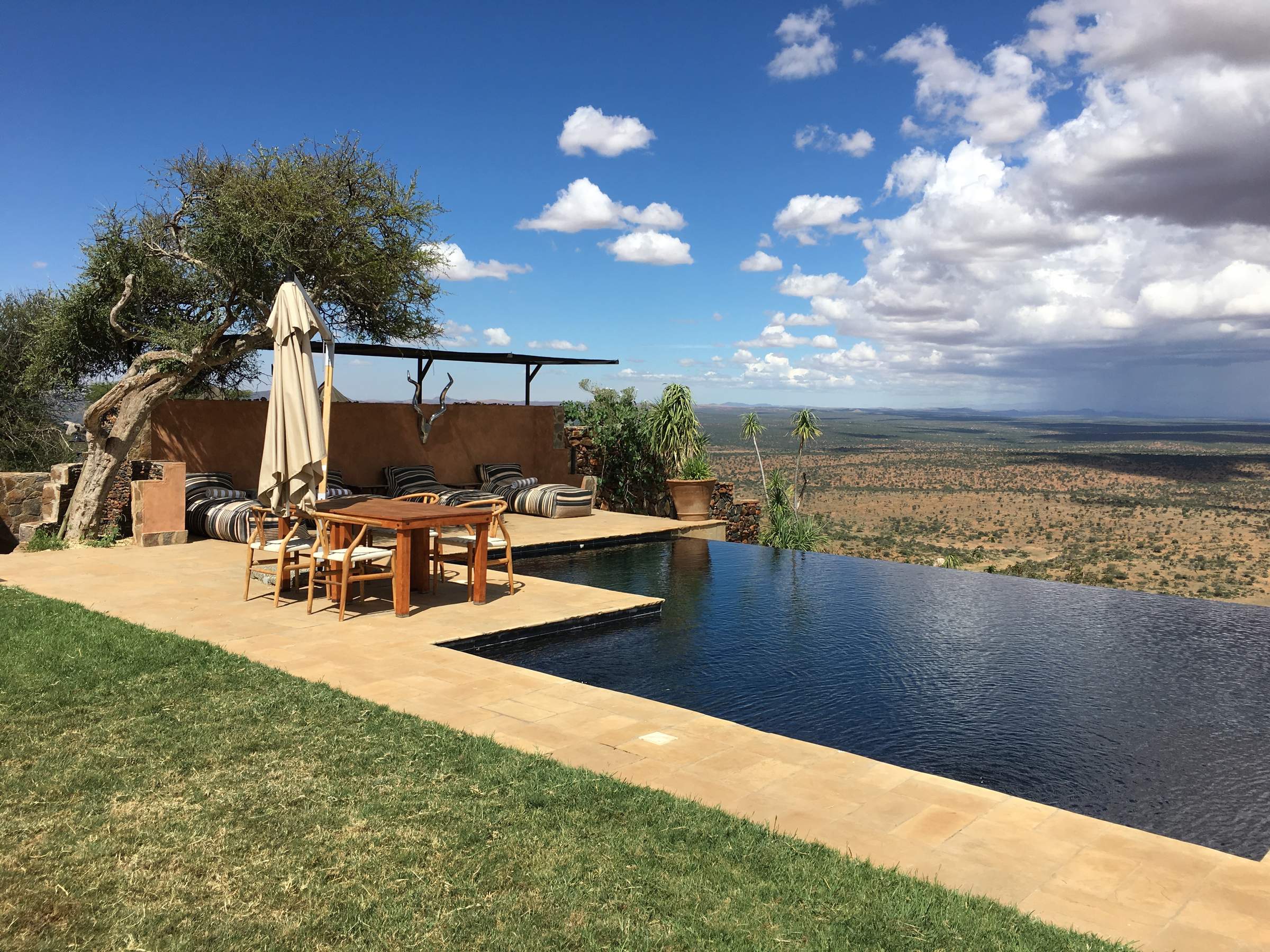
Loisaba Tented Camp
Loisaba Tented Camp is a luxury safari base of tented rooms, ranged along a ridge in the Loisaba Conservancy, facing Mount Kenya. The camp was completely rebuilt in 2016.
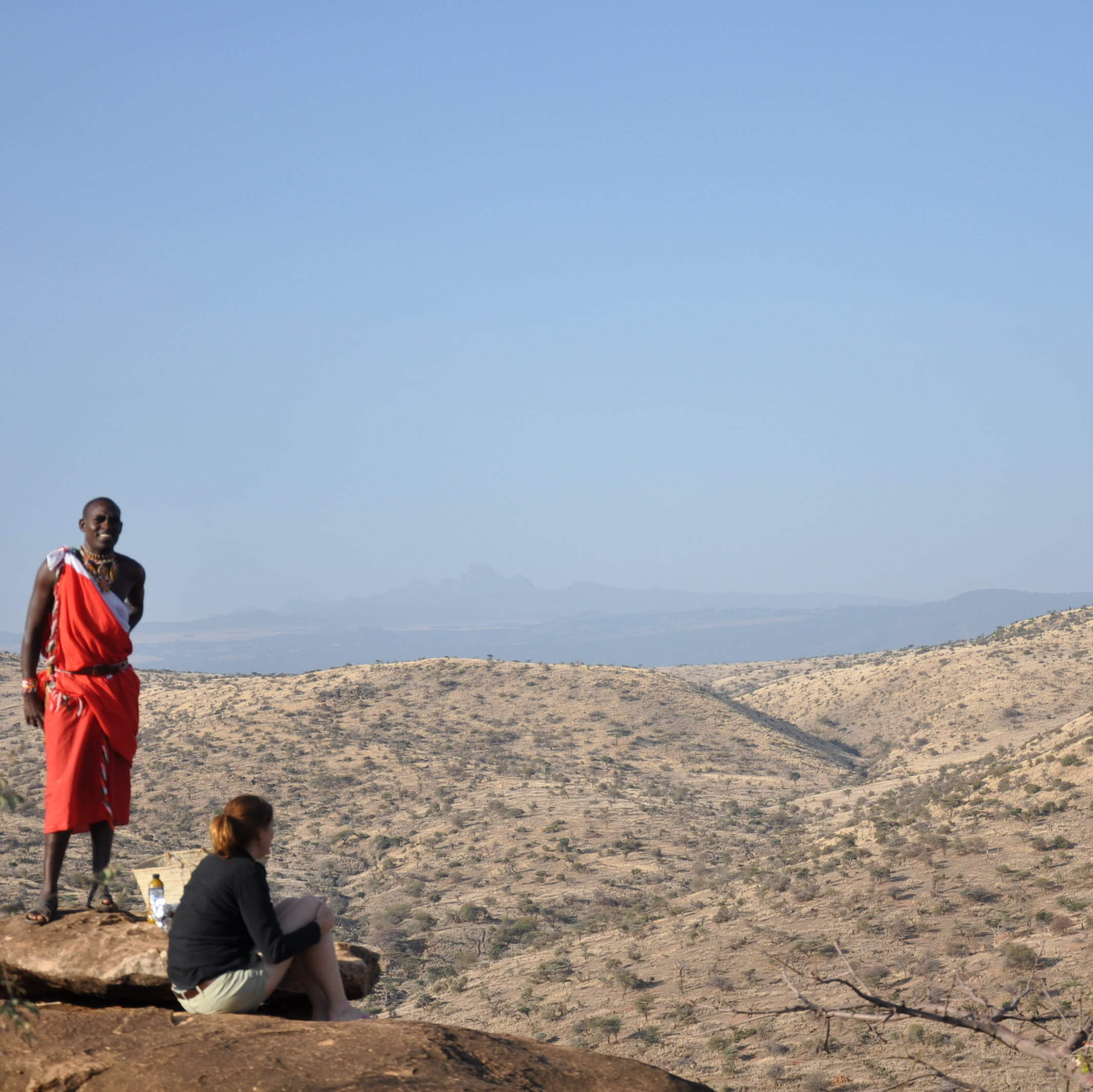
Tassia Lodge
Tassia offers a unique wilderness experience in a remote location: come here for cultural interaction, stunning views and something a bit different.
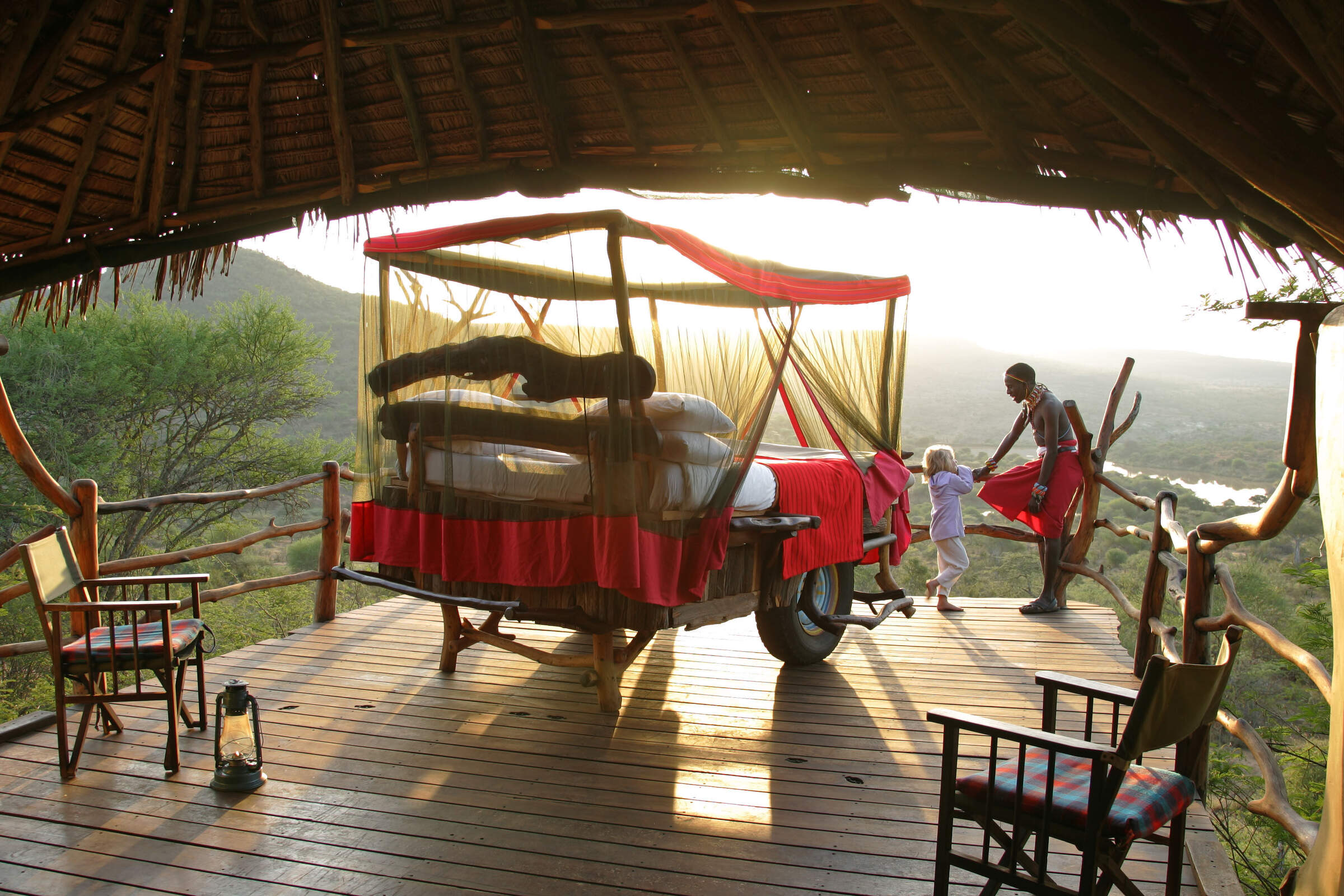
Loisaba Star Beds
Loisaba Starbeds is a simple camp of 4 rooms with pull-out, open-air 'star beds', located near a dam in the Loisaba Conservancy, in northwestern Laikipia.
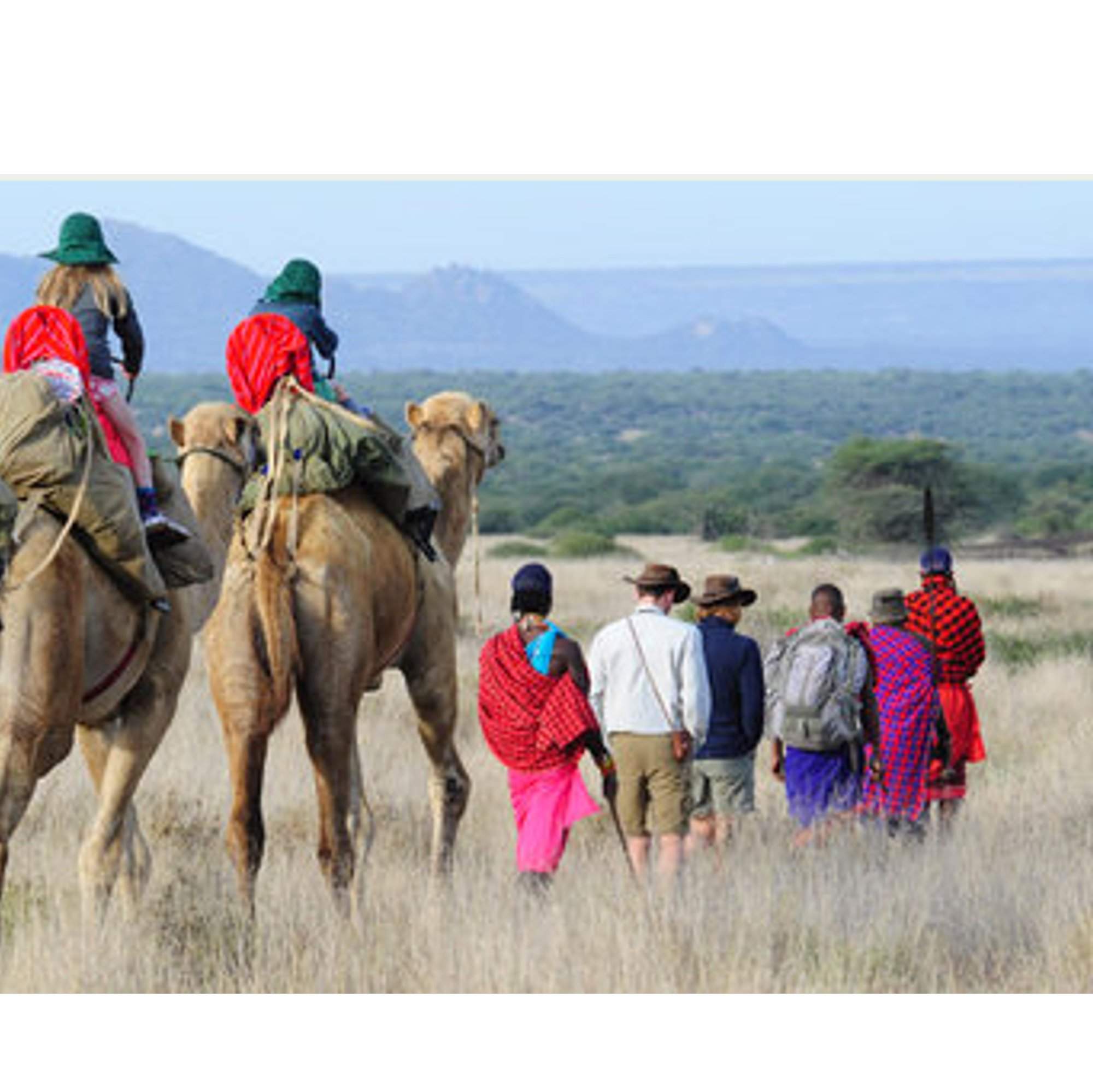
Karisia Walking Safaris
Karisia Walking Safaris operates camel assisted, multi-day walking safaris from its main camp, Tumaren, set in a remote part of Laikipia.
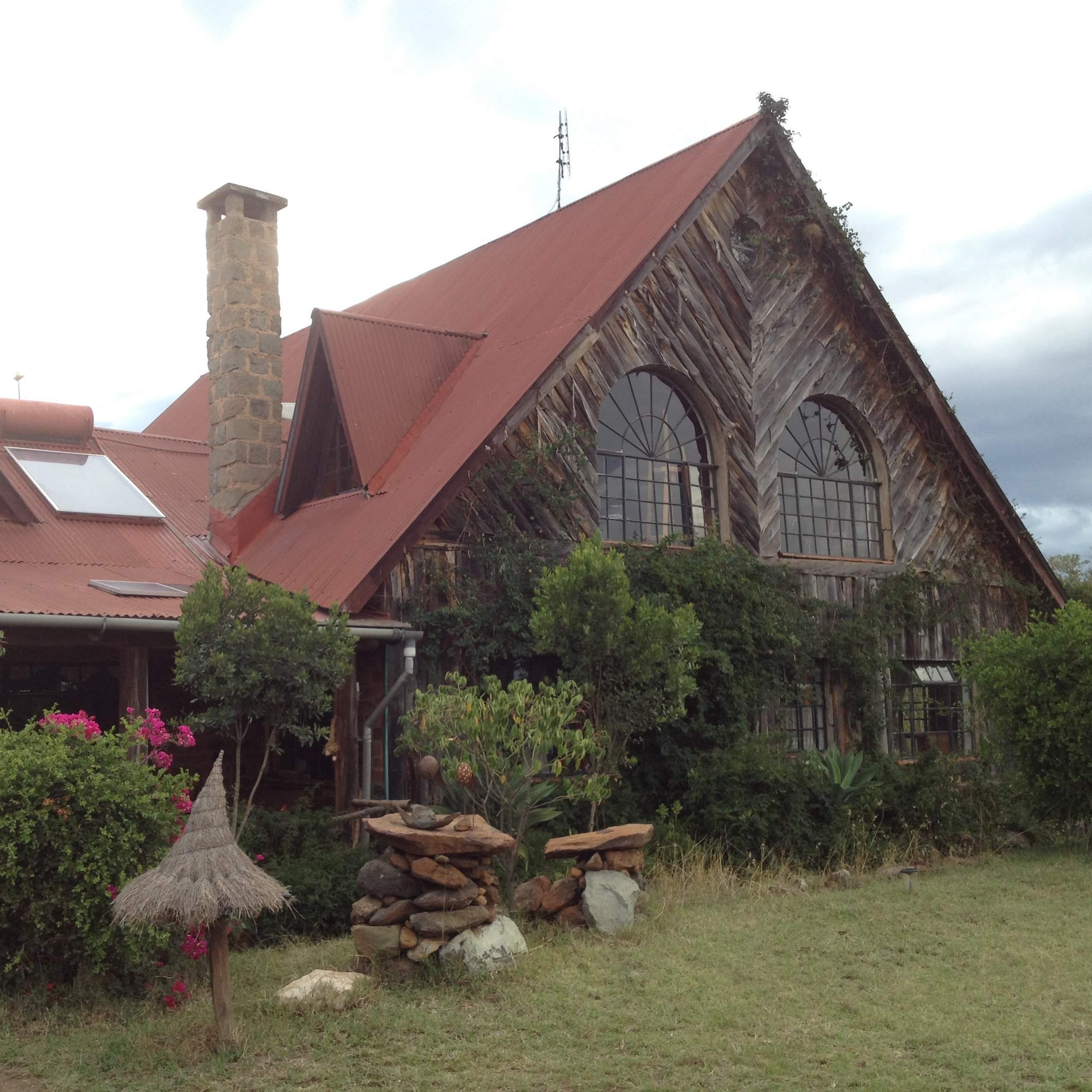
Sandai
Sandai is a pretty, owner-run homestay, set between the Aberdare Range and Mount Kenya, offering a range of activities at extra cost.
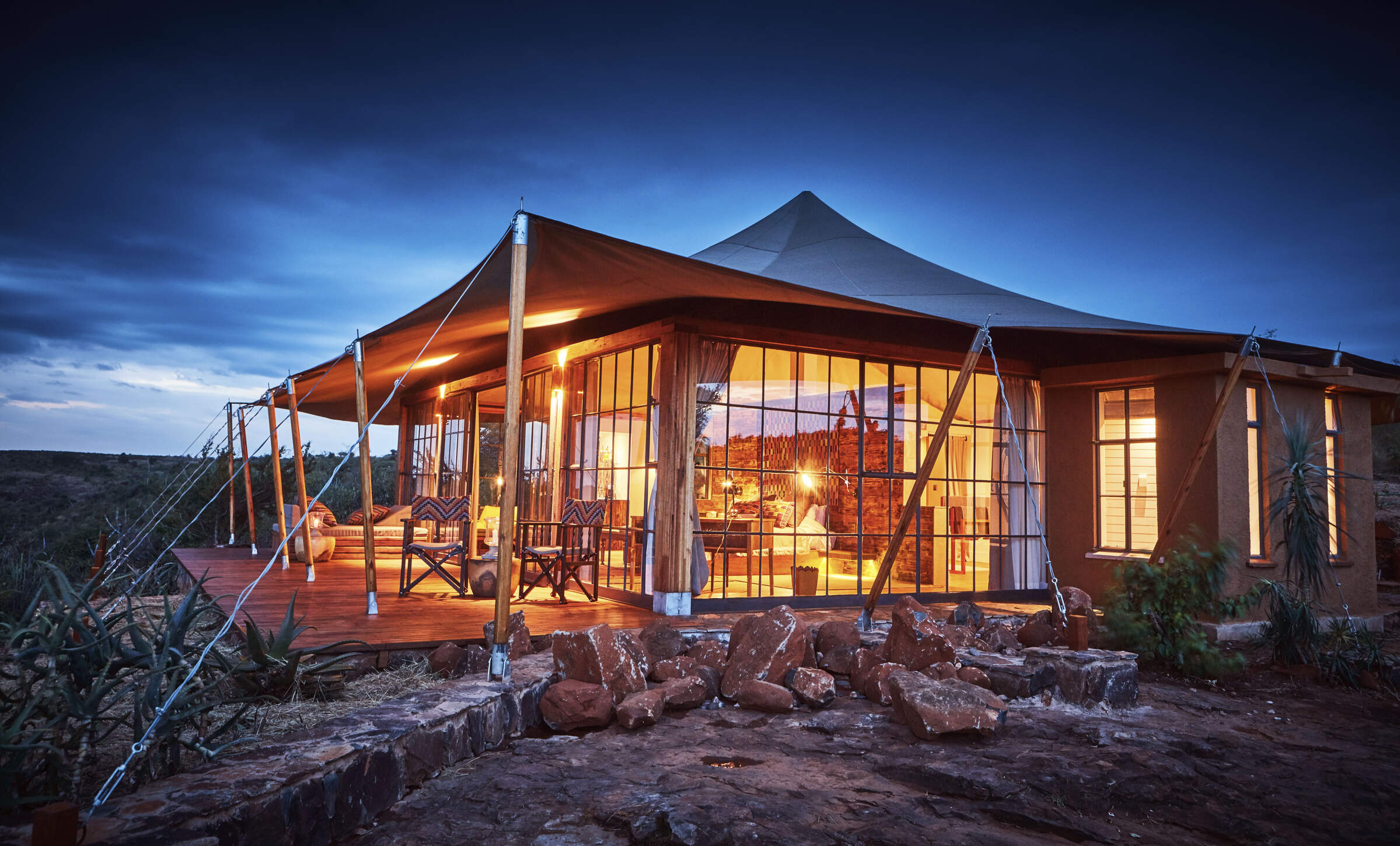
Lodo Springs
Lodo Springs is a spectacularly located luxury lodge in a remote spot in the Loisaba Conservancy, sister lodge to Loisaba Tented Camp and Loisaba Star Beds.
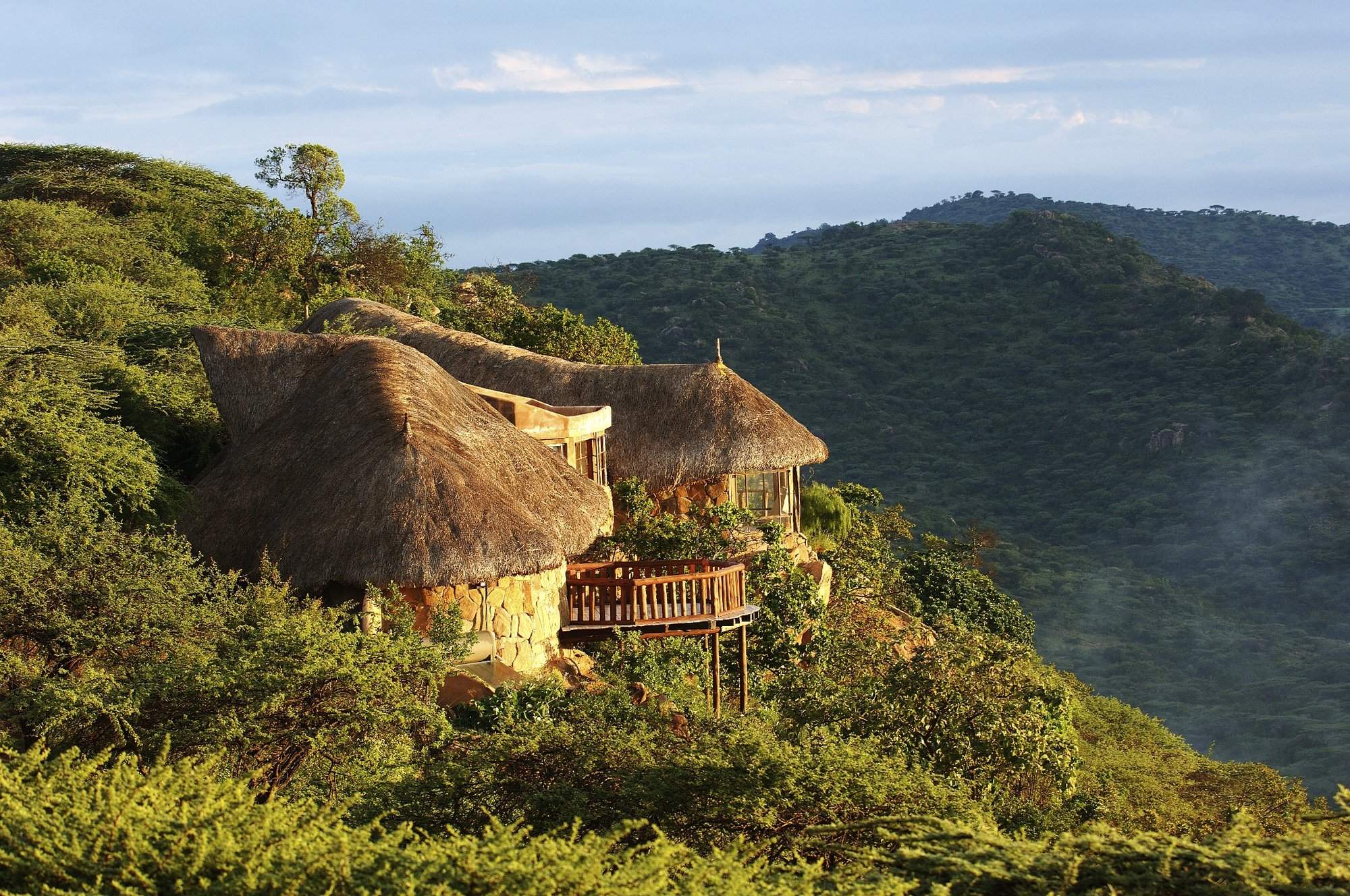
Sanctuary at Ol Lentille
The Sanctuary at Ol Lentille is an unusual safari lodge in northern Laikipia, consisting of three exclusive villas, and offering a huge range of activities.
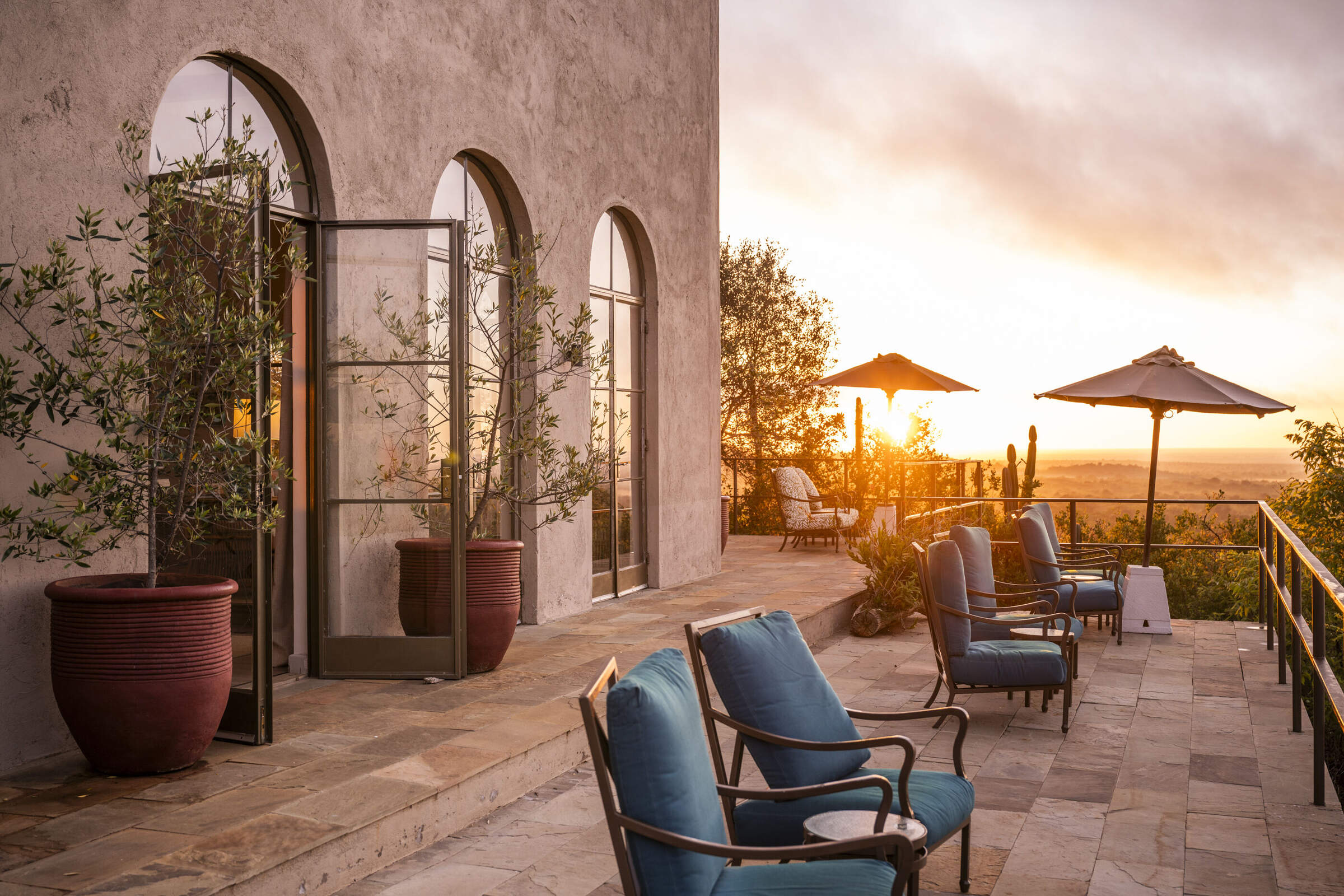
Governors' Mugie House
Governors' Mugie House – a substantial, luxury safari lodge – is one of only two properties in the Mugie Conservancy in northwestern Laikipia.
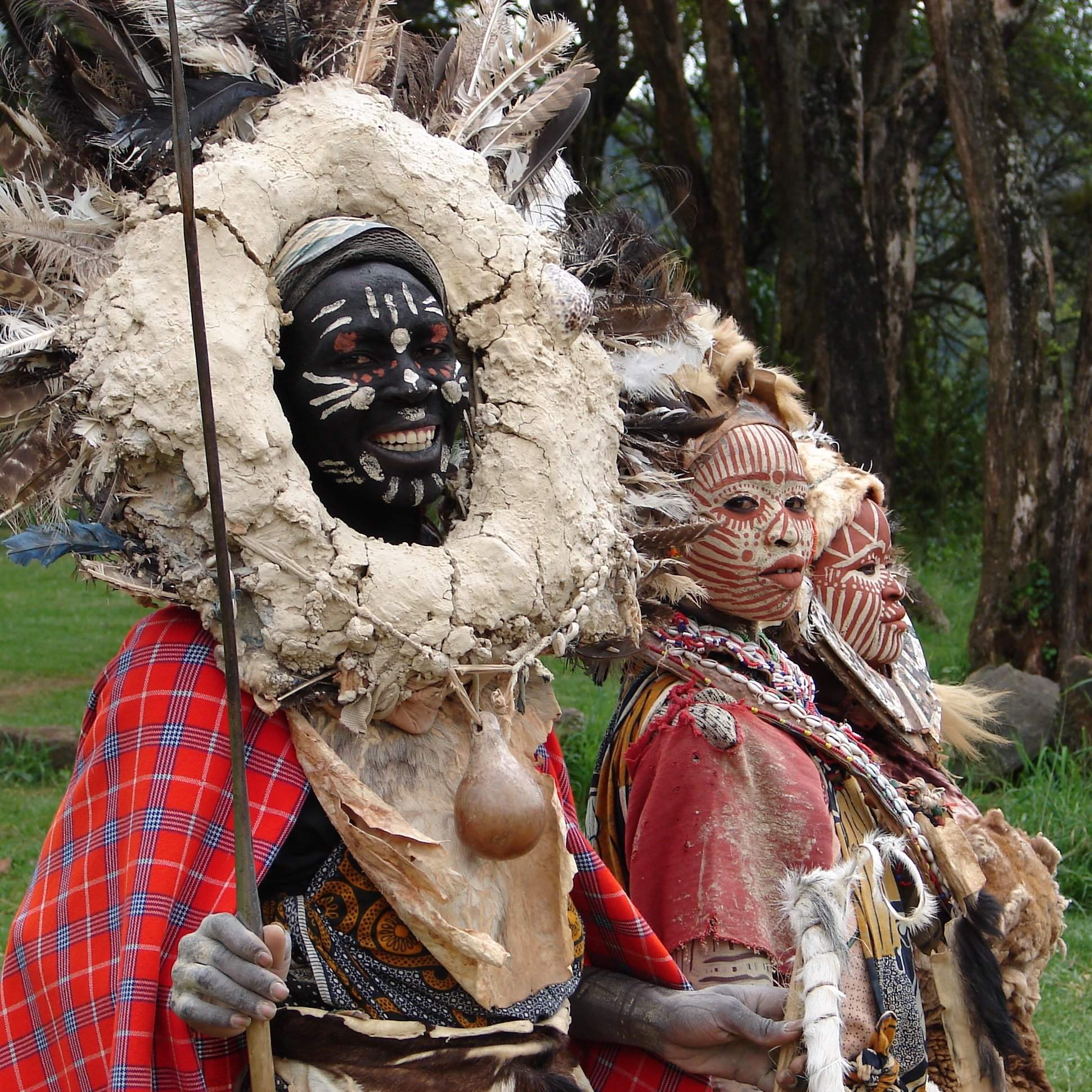
Thomsons Falls Lodge
Thomsons Falls Lodge is a simple hotel dating back to the colonial era, located above the falls of the same name, near the western Laikipia town of Nyahururu.
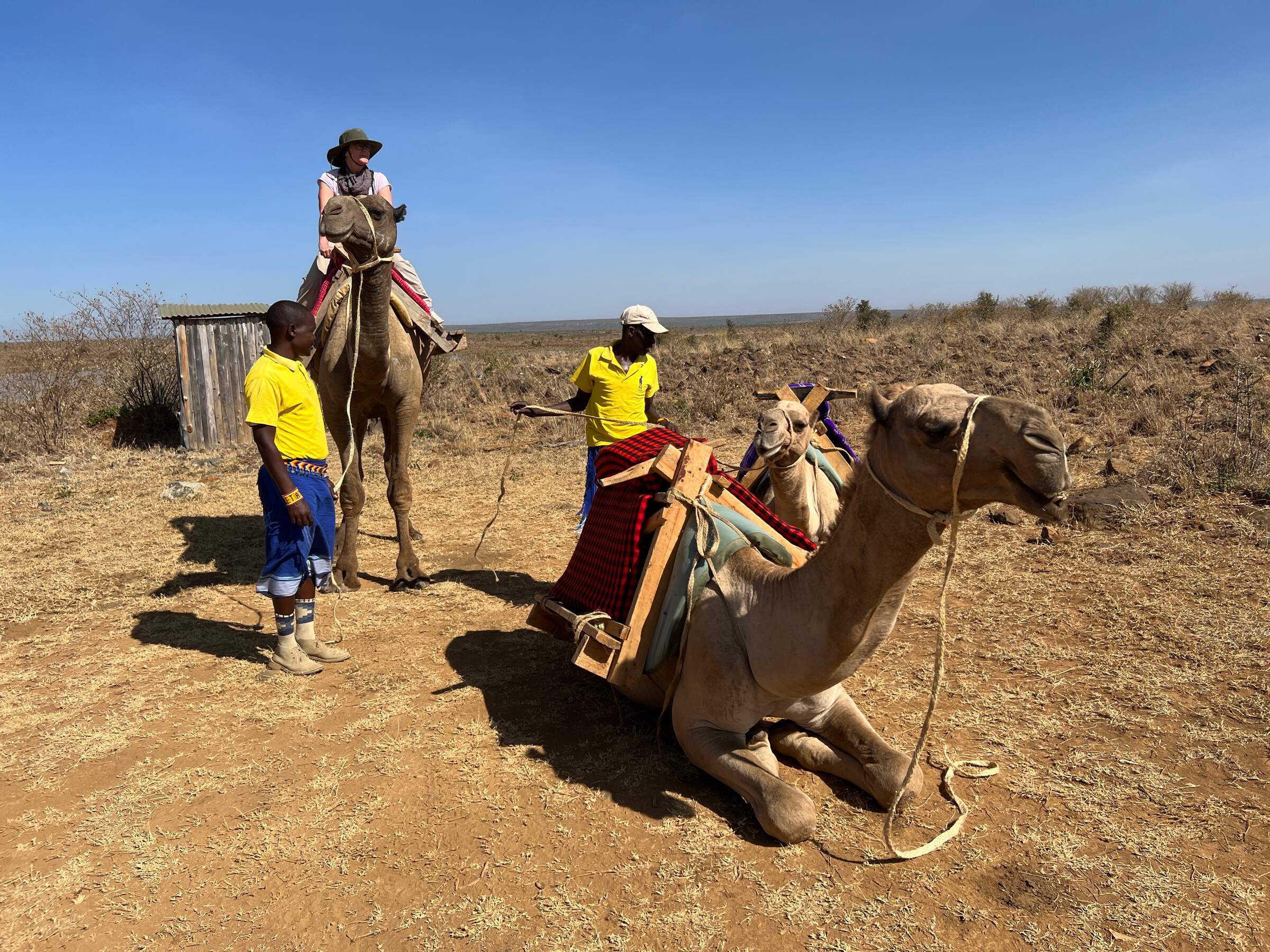
Ekorian's Mugie Camp
Ekorian's Mugie Camp is a pleasant, family-friendly safari camp in a remote location in northwestern Laikipia.
When to go to Laikipia
Our month by month guide: What it's like to visit Sweetwaters Serena in Laikipia
Jan
Feb
Mar
Apr
May
Jun
Jul
Aug
Sep
Oct
Nov
Dec
Laikipia in January
Clear, warm days and mild nights make this a popular time for safaris in Laikipia. It's excellent for game viewing in all the conservancies, where water sources attract diverse wildlife. The dry conditions make it easier to spot black rhinos, lions and leopards. Star bed sleep-out options at a number of lodges are particularly magical under the clear night skies.
After the New Year period, many camps and lodges treat January as mid-season, offering good value. The landscape retains some greenery, enhancing photography.
- Clear days ideal for safaris
- Excellent visibility for wildlife viewing
- Dry riverbeds attract wildlife to water sources
- Calving season for wildebeest and antelopes
- Palearctic migrant birds abundant
Our view
Fantastic: the very best time to visit
Weather in January
Laikipia in February
With the short dry season well established in Laikipia, wildlife gathers close to water points, making it an excellent time for safaris. Ol Pejeta and Lewa Wildlife Conservancies offer prime viewing opportunities for endangered species like black rhinos and Grevy's zebras. Solio Rhino Conservancy provides exceptional black rhino sightings during this period. The grass is grazed down, improving visibility across the region.
February is ideal for walking safaris, where you can appreciate the smaller details of the ecosystem. The clear skies make stargazing from star beds an unforgettable experience. Cultural visits to local communities are particularly rewarding, as the pleasant weather encourages outdoor activities and interactions.
- Prime time for wildlife gathering near water
- Ideal conditions for walking safaris
- Palearctic migrant birds still present
- Low rainfall makes game drives rewarding
Our view
A very good time to visit
Weather in February
Laikipia in March
As March progresses in Laikipia, the weather becomes increasingly hot and humid with more rain likely later in the month. Through most of the month, conditions are still good for game drives in most districts. As the month advances, the buildup to the rainy season becomes apparent.
This period can offer unique photographic opportunities as animals congregate around diminishing water sources. Accommodation costs decrease as the low season approaches.
- Early month offers great wildlife viewing
- Hot weather transitions to occasional rains
- Lower visitor numbers
- Lush vegetation begins to appear
Our view
A good time to visit, with pros & cons
Weather in March
Laikipia in April
April usually sees established, serious rainfall in much of Laikipia, transforming the landscape. The southeast monsoon wind brings cooler temperatures and frequent downpours. While game viewing can be challenging due to lush vegetation, the green season offers unique experiences, with new-born animals visible among the verdant scenery.
The landscape bursts into life with vibrant colours, ideal for photography. Birdwatching is excellent with many species breeding. This is a quieter time for tourism, with lower accommodation rates at many places allowing for a more exclusive safari experience for great levels of service.
- Long rains begin, transforming landscapes
- Green season offers unique photo opportunities
- Lower rates at Laikipia's luxury lodges
- Buffalo and zebra calving season commences
- Birdwatching excellent
Our view
A good time to visit, with pros & cons
Weather in April
Laikipia in May
May in Laikipia is characterised by ongoing rains and lush vegetation. While game viewing can be trickier, the vibrant landscapes offer spectacular photographic opportunities with very little dust. The landscapes are a sea of green, with diverse and thriving flora.
This is an excellent time for birdwatching across the region as breeding season continues. The Ewaso Nyiro river swells impressively. Despite potential challenges, patient visitors may witness dramatic scenes of predators hunting in the thick vegetation.
- Lush vegetation makes wildlife spotting trickier
- Great for landscape and nature photography
- Rutting season for wildebeest and impalas
- Frog breeding season in Laikipia's wetlands
- Mount Kenya views improve with clearer air
Our view
A good time to visit, with pros & cons
Weather in May
Laikipia in June
As June progresses in Laikipia, the rains give way to slightly cooler, cloudy weather. This transition marks the beginning of a long, generally dry, high season for visitors. Game viewing improves as vegetation starts to thin, and conditions are comfortable.
The Ewaso Nyiro river, still full from the rains, attracts diverse wildlife. Accommodation rates begin to rise, reflecting the start of peak season.
- Rains subside, ushering in cooler weather
- High season begins with increased visitors
- Comfortable conditions game viewing
Our view
A good time to visit, with pros & cons
Weather in June
Laikipia in July
July in Laikipia brings cooler temperatures and ideal conditions for safaris. Animals concentrate around water sources on the conservancies, providing excellent game viewing opportunities.
July marks the peak of the high season, with higher accommodation rates and visitor numbers. The dry conditions make it easier to spot elusive species like leopards and black rhinos.
- Cool weather perfect for walking and riding
- Wildlife concentrates around water sources
- Excellent conditions for photography tours
Our view
A good time to visit, with pros & cons
Weather in July
Laikipia in August
August in Laikipia offers mild, dry weather, perfect for safaris. The conservancies teem with wildlife, including endangered species like black rhinos and Grevy's zebras. The landscapes offer stunning vistas and excellent conditions for game drives and walking safaris. The dry conditions make it easier to spot big cats across the region. This is peak season, so expect higher visitor numbers and accommodation rates.
You might consider combining your Laikipia safari with a stay at the nearby Samburu National Reserve, known for its “northern five” species – Grevy’s zebra, reticulated giraffe, beisa oryx, gerenuk and Somali ostrich.
- Peak season for wildlife viewing in Laikipia
- Mild weather ideal for outdoor activities
- Busy period requires advance bookings
Our view
A good time to visit, with pros & cons
Weather in August
Laikipia in September
As September progresses in Laikipia, the weather typically remains dry with clearing skies, signalling excellent safari conditions. Early September can be busy, but visitor numbers decrease later in the month. In the conservancies, game viewing is exceptional as animals congregate around limited water sources.
September generally offers excellent conditions for photography.
- Hot, dry weather with good visibility
- Quieter period for more exclusive safaris
- Natural bush fires flush out insects and small animals for predators
Our view
Fantastic: the very best time to visit
Weather in September
Laikipia in October
October in Laikipia brings generally hot and mostly dry conditions, ideal for safaris. It's a favourite month for many visitors due to the good weather and fewer visitors. The conservancies offer excellent game viewing, with animals concentrated around water sources. The Solio Rhino Conservancy provides exceptional rhino sightings in the dry conditions.
Birdwatching is rewarding as Palearctic migrants begin to arrive. Cultural visits to Maasai communities remain a highlight. Consider combining your Laikipia safari with a trip to the nearby Samburu National Reserve for a diverse wildlife experience.
- Warm or hot and mostly dry conditions for safaris
- Migratory birds start arriving
- Perfect for photography
Our view
A very good time to visit
Weather in October
Laikipia in November
November in Laikipia marks the beginning of the short rains, usually in the latter half of the month. This transition brings about dramatic changes in the landscape. Early November can still offer good game viewing before the rains intensify. Then the bush begins to green, creating beautiful scenery.
As the low season begins, accommodation rates decrease, and visitor numbers drop too, allowing for a more exclusive safari experience. Birdwatching becomes excellent with the arrival of many migratory species. November is ideal for photographers capturing the changing landscapes and dramatic skies, with low dust and clear air. Cultural visits to Maasai communities offer insights into how local life adapts to the changing seasons.
- Short rains begin, transforming landscapes
- Low season offers better rates and privacy
- Excellent time for birdwatching in Laikipia
- Lush scenery provides stunning backdrops
Our view
A good time to visit, with pros & cons
Weather in November
Laikipia in December
In a typical December, Laikipia sees the short rains finish by mid-month, leaving the landscape at its most beautiful. Clear blue skies return, heralding the start of the second peak visitor season from around 20 December onwards. The conservancies offer excellent game viewing with lush backdrops.
Christmas can occasionally be wet, but most years see perfect safari conditions by the festive season. This is an ideal time to combine wildlife viewing with cultural experiences, such as visiting Maasai communities.
- Rains typically end, leaving landscapes lush
- Peak tourist season begins mid-month
- Christmas safaris popular in conservancies
- Night sky clarity ideal for stargazing
Our view
A good time to visit, with pros & cons
Weather in December

Looking for inspiration on where to travel next?
Visit our trip chooser to explore your options and find inspiration for your perfect African adventure
Inspire me